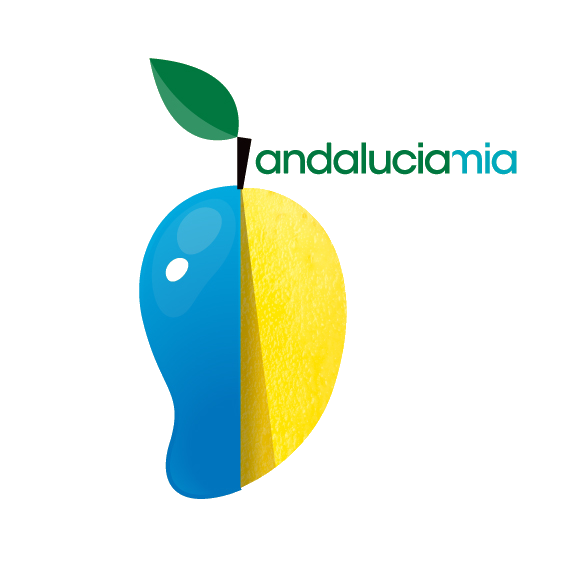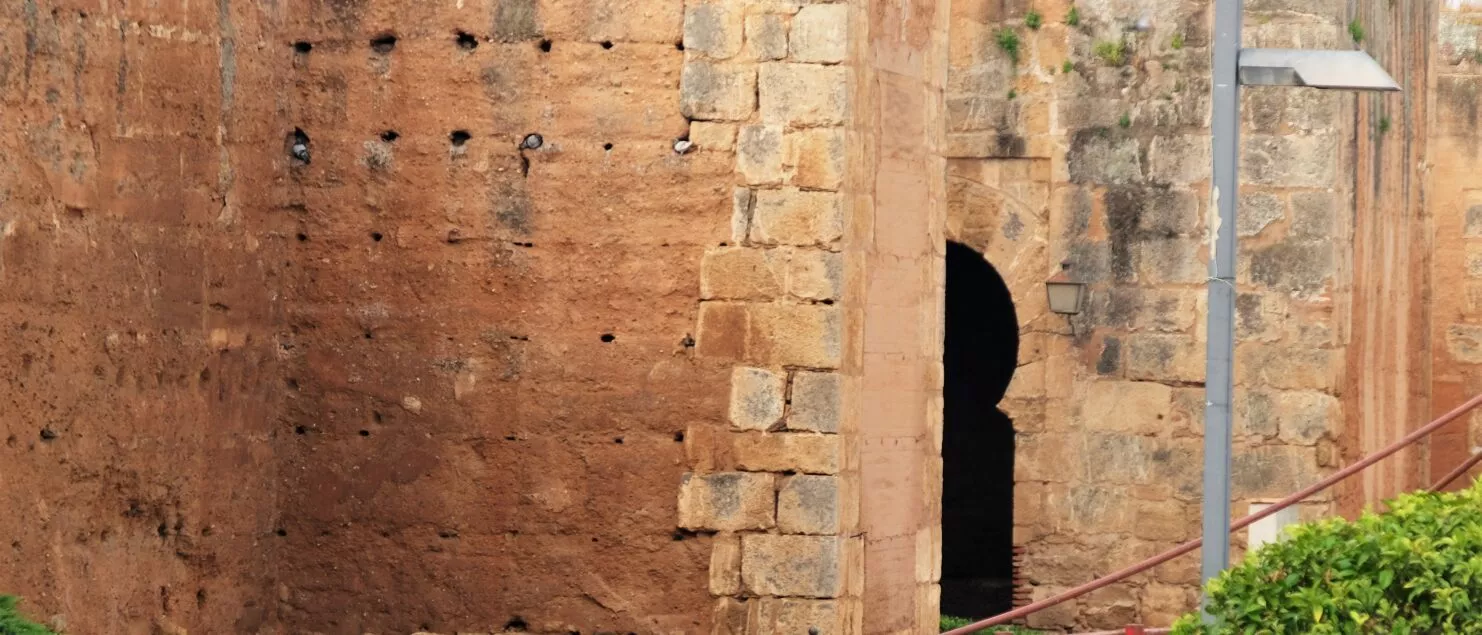What to see in Niebla – discover a treasure off the beaten track
Niebla, a small town to see, to discover, to visit absolutely
In this article you’ll find the essential information on what to see and do in Niebla:
- A few words about Niebla and its incredible history
- Where Niebla is on the map
- Best things to see in Niebla
- What to do in Niebla and Huelva
- Period of the Niebla Fair
- Book accommodation in an unusual village
- What to see around Niebla
- Some useful links (visits in Andalucia)
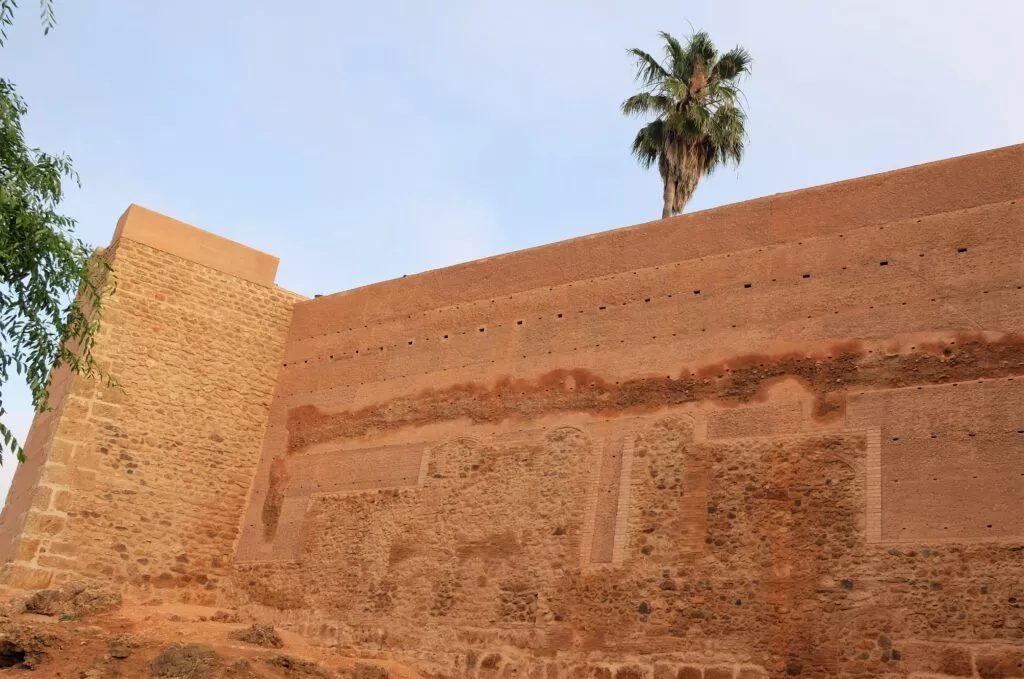
A few words about Niebla and its incredible history
Please note: Niebla’s presentation may be a bit long but it allows you to take full advantage of the visit of this wonder.
Niebla is one of my greatest surprises in Andalucia. The town is in the province of Huelva, just an hour’s drive from Seville.
Like its walls, the history of Niebla is quite unique and incredible for a small town that has been a fervent supporter of freedom and independence for every civilisation that has passed through it.
Niebla has had a different name in each civilisation
- Ilípula was the name given to it by the Tartessos, one of the earliest peoples.
- The Romans, who had trouble conquering it, called it Llipla
- Then the Visigoths called it Elepla
- The Arabs gave it the name Lebla or Lebla Al-Hamra (Lebla the Red, in reference to the red tones of its walls). The origin of this nickname, Al Hamra, is therefore identical to the name given to the Alhambra in Granada).
- Then the Christians “baptised” it with its current name: Niebla.
The most interesting period in Niebla’s history is the 544 years of Arab occupation, until 1262. The legacy of this period is still very much alive today.
Independent Niebla
Niebla has always claimed or obtained a degree of independence, from the Phoenicians, through the Romans, the Moors and even from the reign of the Catholic kings. Each period has seen fierce battles to become master of Niebla. Here are just a few examples from the Al-Andalus period.
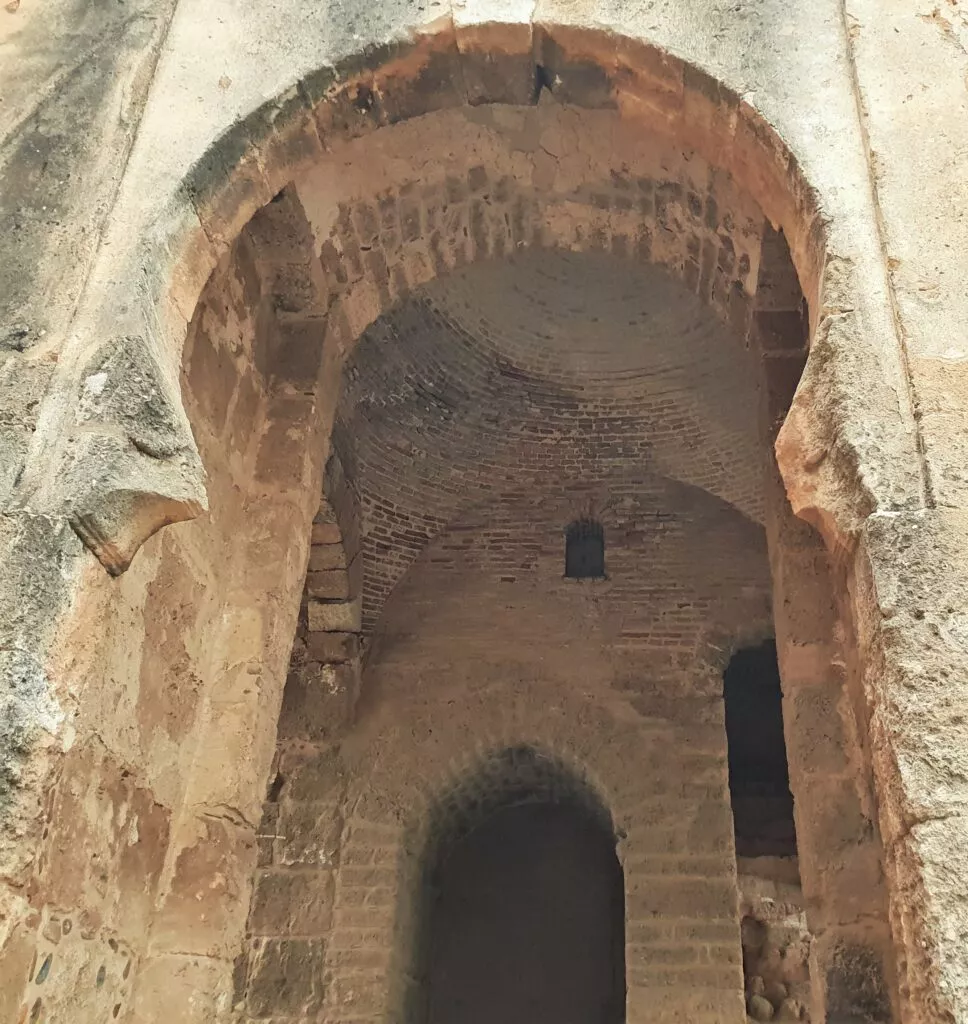
- In 1023: At the end of the Umayyad caliphate, during the Fitna period, Niebla became an independent kingdom. The Banu Yahsub family, led by Yahya al-Yuhsubi, proclaimed their independence and founded the Taifa of Niebla.
- In 1053, Al-Mutalid, King of Seville, led a battle which he won, and incorporated this taifa into the kingdom of Seville.
- It then came under Almoravid and Almohad domination. The Almohads hanged Niebla from the Almoravids after a bloody battle in 1145.
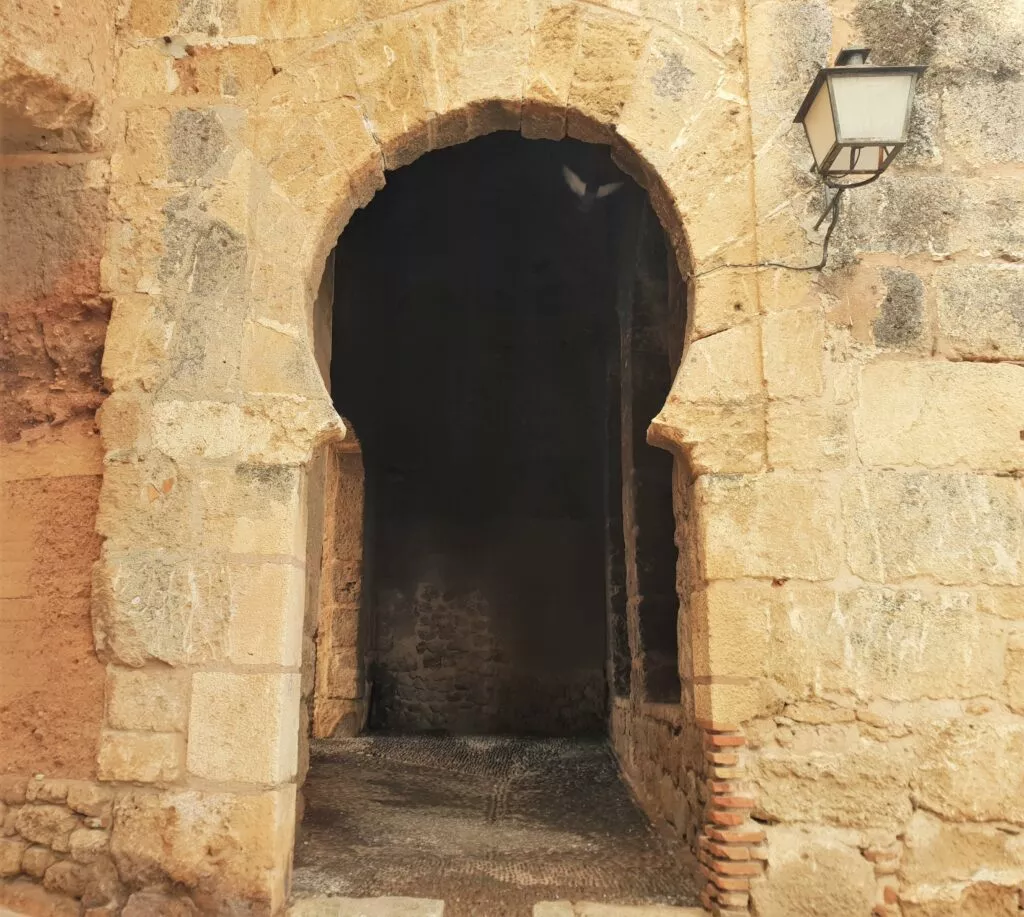
However, under these 2 dynasties, Niebla twice again became an independent kingdom:
- From 1145 to 1150
- During the Almohad period, Niebla regained its independence under the reign of Ibn Mahfuz, who proclaimed himself King of the Algarve in 1234. This autonomous kingdom included a large part of the province of Huelva in Andalucia, as well as southern Portugal, particularly the Algarve region.
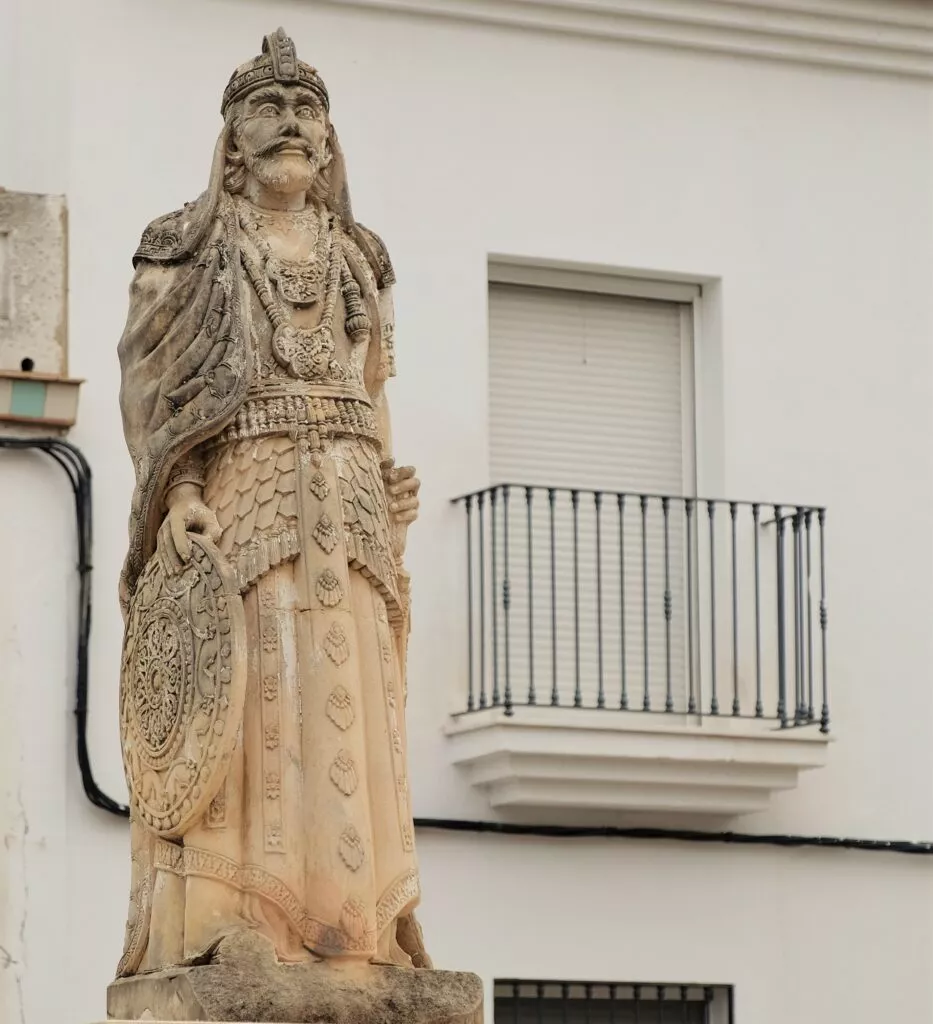
1262: Conquest of Niebla by Alfonso X and end of the Al-Andalus period in Niebla. During the siege (which lasted more than 9 months) for the conquest of the city by the Catholic kings, several very unusual things happened:
- It was the first time gunpowder was used in the West (made from orange peel for its flammable qualities).
- The siege lasted over 9 months, but the city was never conquered (thanks to its wall, no doubt).
- The city surrendered due to hunger.
- King Alfonso X allowed all the Muslims to stay.
- Alfonso X allowed King Ibn Mahfuz to live in Seville (conquered in 1246) for the rest of his life.
Niebla on the map
Best things to see in Niebla
- The niebla wall
- The doors of the wall
- Puerta de Sevilla
- Puerta del Embarcadero
- Puerta del Agua
- Puerta del Buey and his legend …
- Puerta del Agujero
- Puerta del Socorro
- The Roman bridge
- The famous Rio Tinto
- The church of Santa María Granada
- The castle of Niebla
- The Church of San Martín
- Storks
The town of Niebla has preserved much of its Moorish past, with a number of must-see monuments, as well as a fine heritage from Roman times.
When it comes to crafts, Niebla has a speciality that you don’t see very often. The town still has a thousand-year-old craft industry based on dried palm leaves. Today, this craft is used to make decorative objects, hats etc etc. Originally, dried palm leaves were used to preserve or transport food, or to make cheese.
The Niebla Wall an absolute wonder to see in Niebla
The Niebla Wall is quite exceptional. It was declared a Historic and Artistic Monument in 1982.
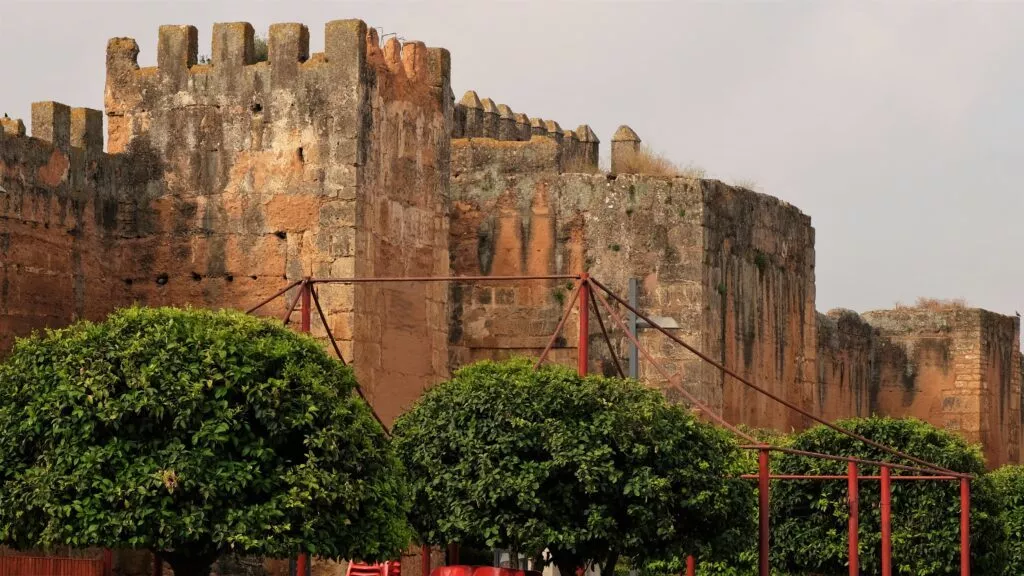
It is one of the best-preserved fortified enclosures in Europe at the time. Most of the wall we can see today was built …. Between 1,000 and 1,300 years old! It is therefore mainly of Umayyad, then Almoravid and finally Almohad origin.
What’s more, the base of the wall is thought to date from the time of the Tartessos. What is certain, however, is that the wall contains the remains of the ancient Roman oppidum, dating back more than 2,000 years, to around 100 BC.
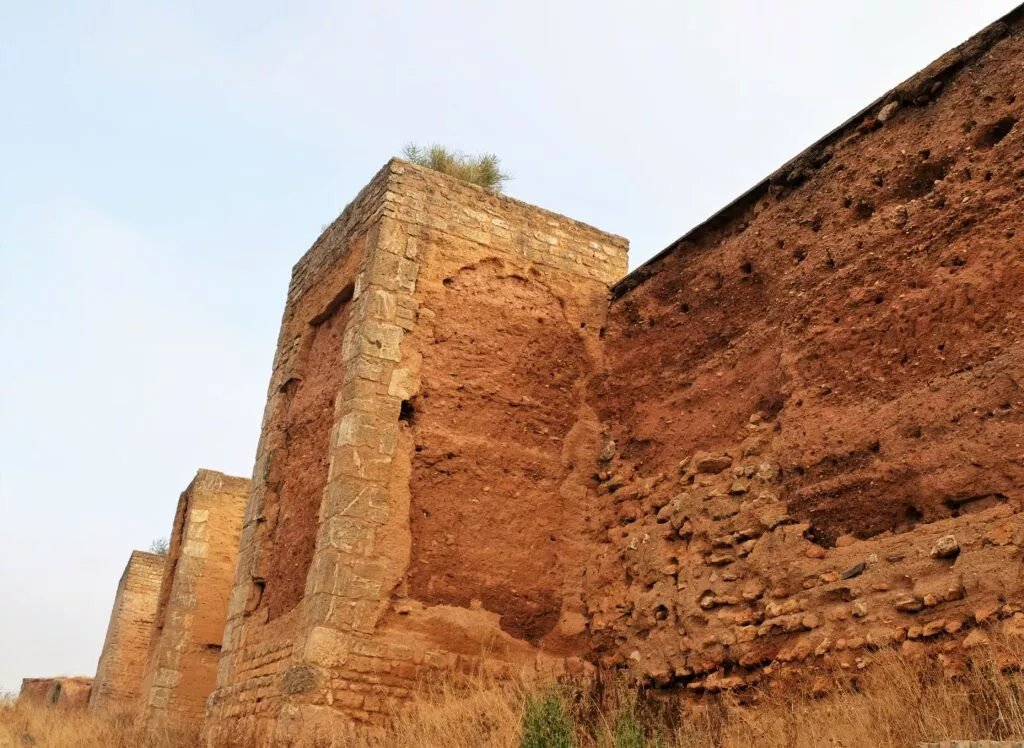
This is an exceptional historic site, and one of incredible proportions. This wall has 50 towers and is 2 km long, surrounding the entire ancient city, which had up to 40,000 inhabitants under the Almoravid dynasty. For its time, it was a very large city, and in comparison, Niebla has around 4,000 inhabitants today.
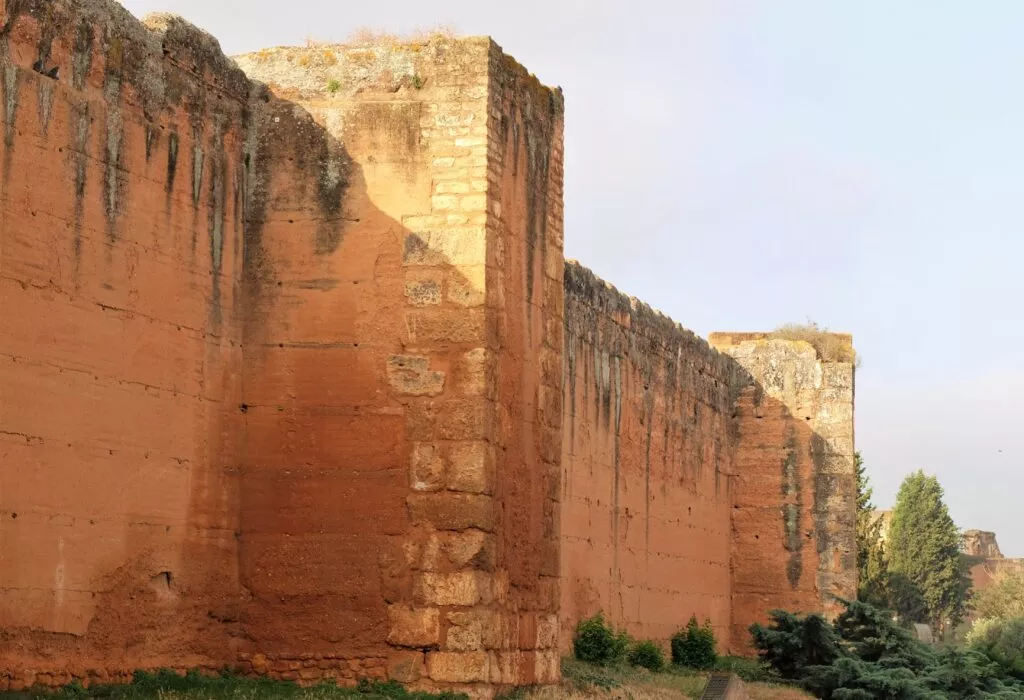
When you walk along the wall, outside or inside the town, you are struck by the beauty and history of the place. It’s a real journey back in time, as the wall offers many different aspects. Some have remained as they were 1,000 years ago, with only the passage of time having taken its toll.
The gates of the wall
To enter the historic town of Niebla, you have to pass through one of the 6 gateways built under al-Andalus.
- The Puerta de Sevilla
- The Puerta del Embarcadero
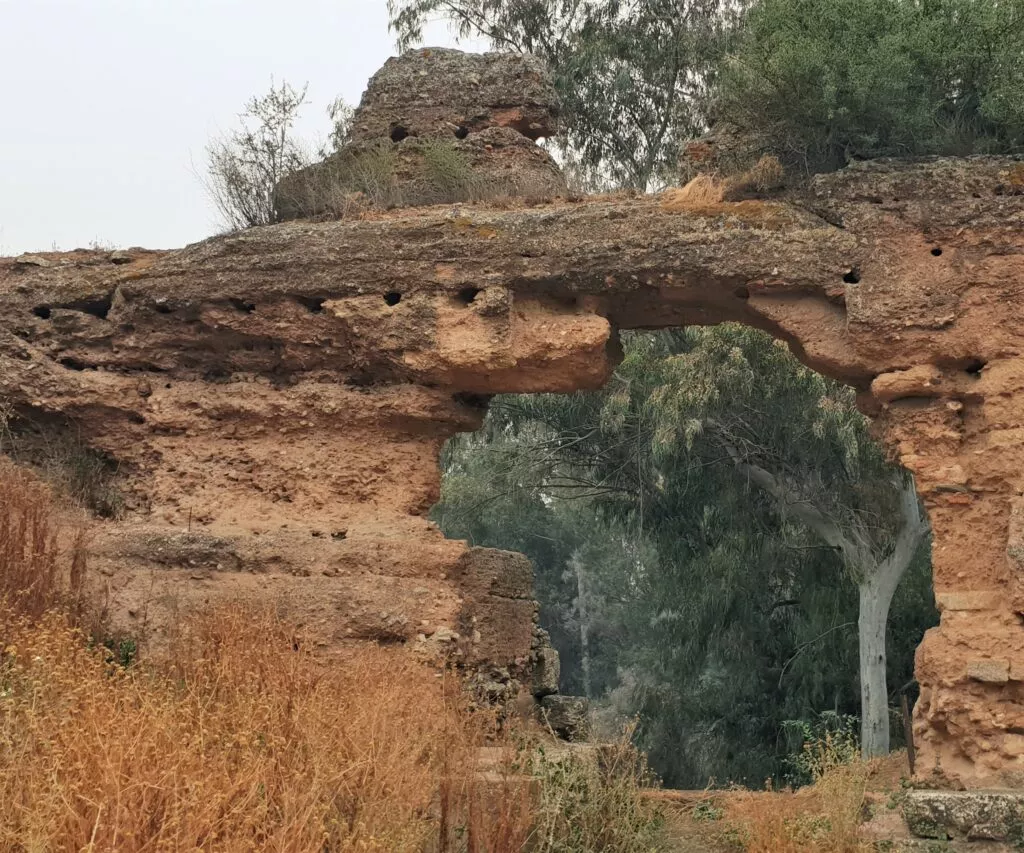
This gate is in ruins, but it’s a great way to travel back in time.
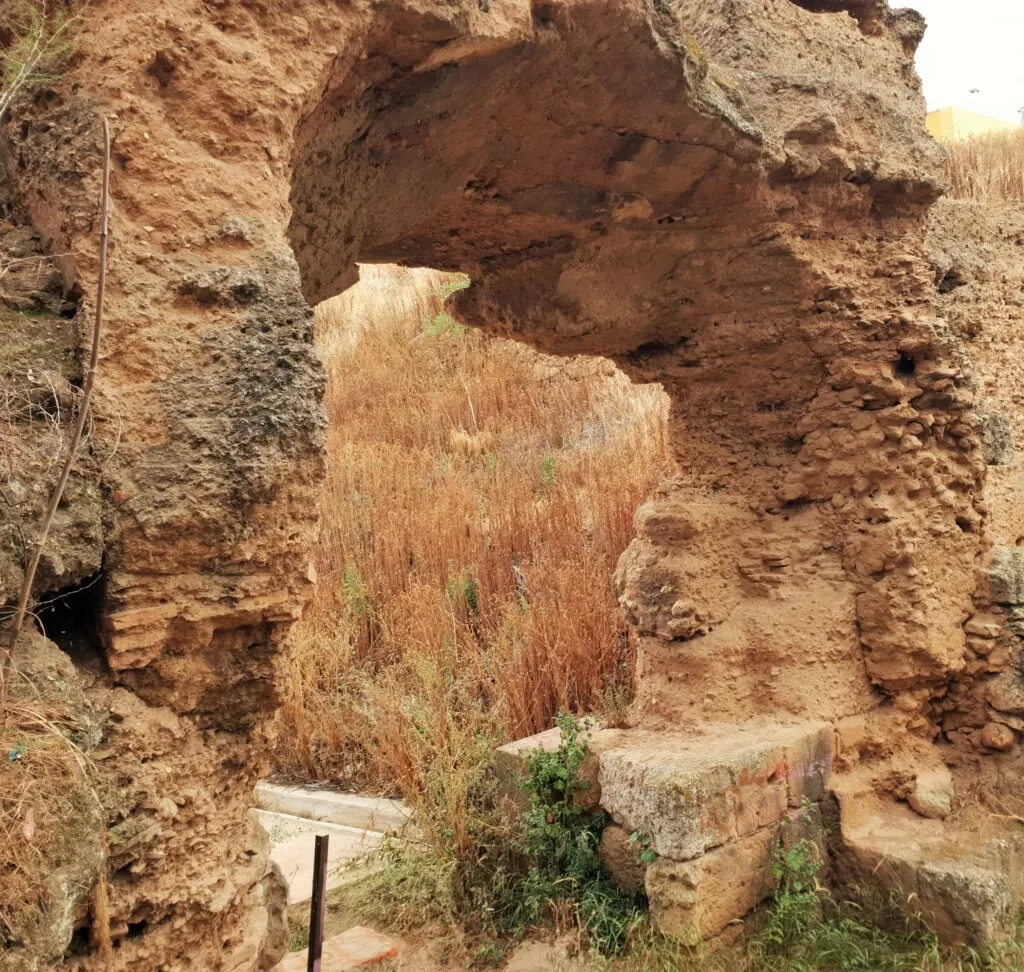
There’s just one problem….if you love old stones, you’ll want to touch them all and imagine the history of this place when it was built….
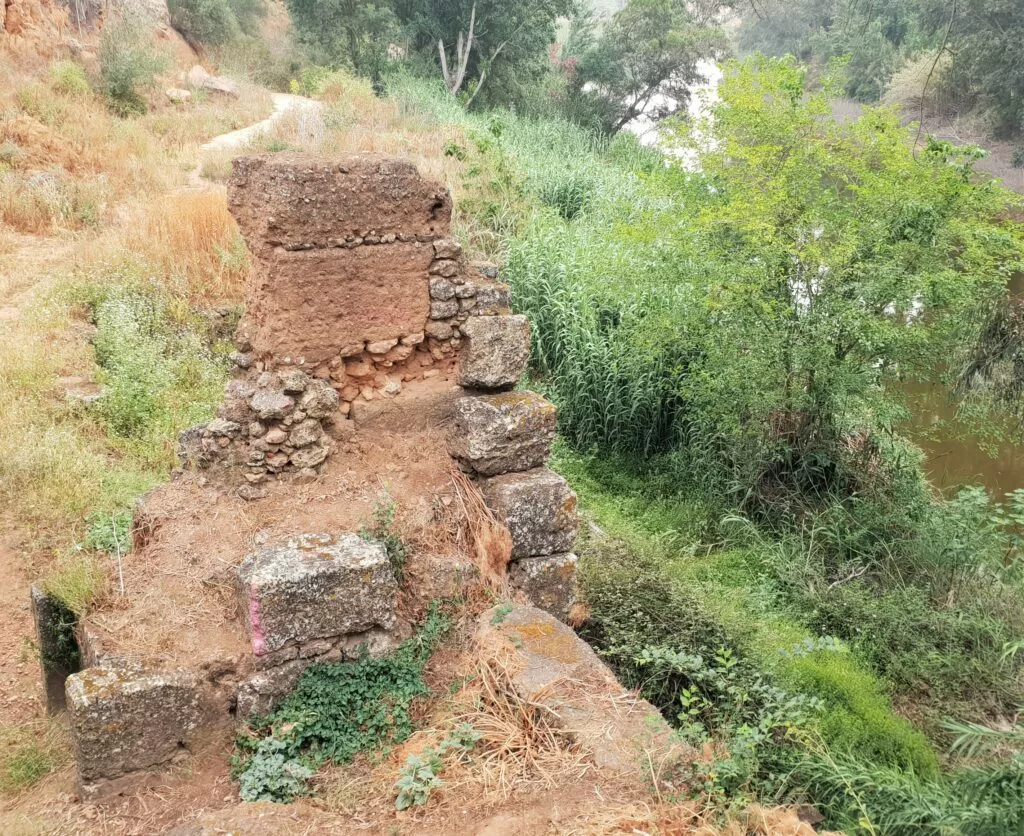
- Puerta del Agua,
- Puerta del Buey
The puerta del Buey (the Ox Gate) is also really beautiful.
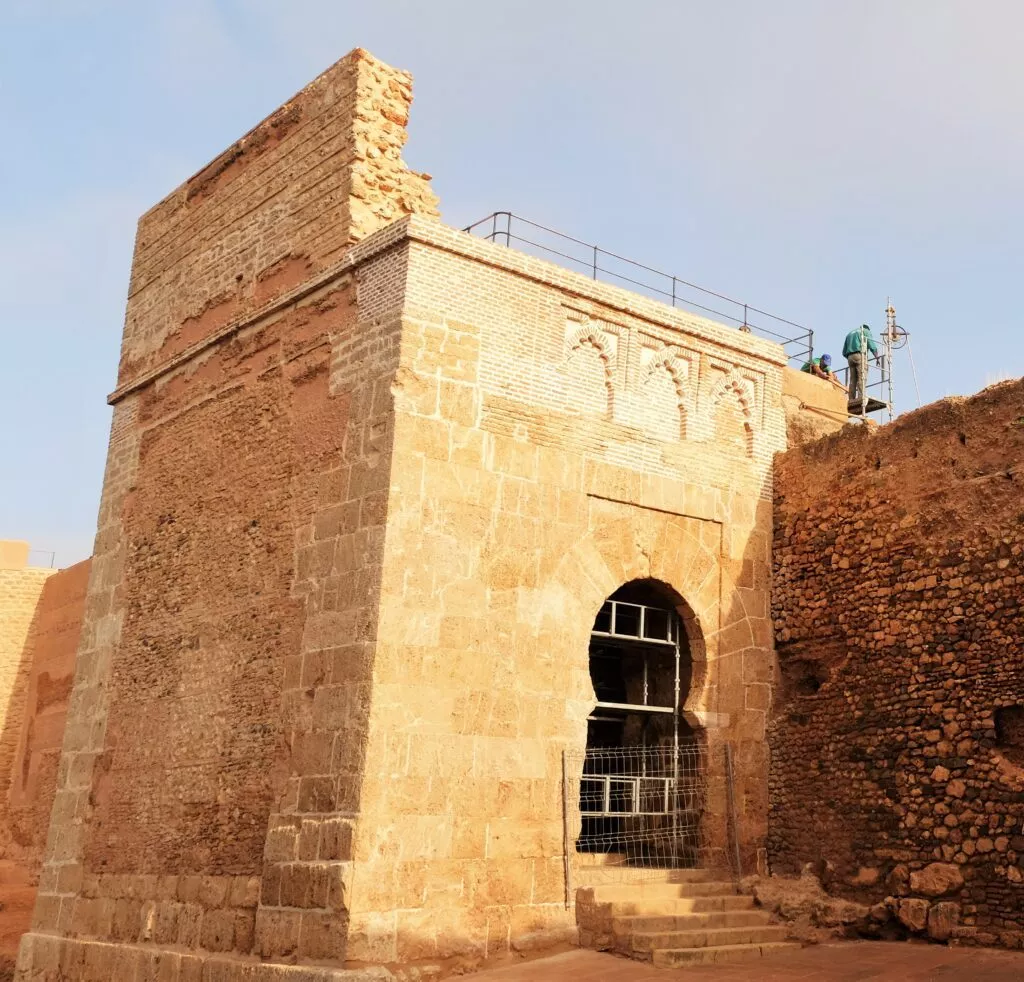
There is a beautiful legend surrounding the origin of the name of this door:
Legend has it that the name of this gate comes from a historical event during Alfonso X’s siege of the city. After several months of siege and the impossibility of Alfonso X taking the city, Ibn Mahfuz decided to let an ox out through this gate to make the attackers believe that the city was ready to hold out for as long as it took and thus hope that Alfonso X would turn back. This was not to be.
- Puerta del Agujero
The Agujero Gate is not really a gateway in the Al-Andalus wall, but rather an entrance of Roman origin, locating the former Roman oppidum.
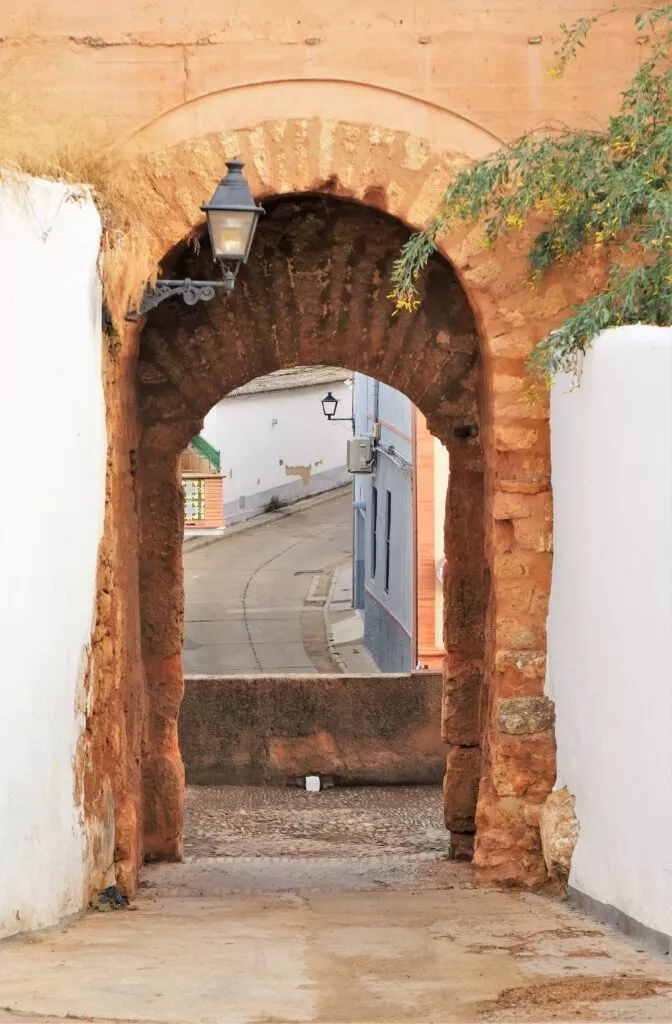
This can be seen from the type of stone used at the foot of the arch. The photo above of the Puerta del Agujero was taken inside the walled enclosure.
- The Puerta del Socorro
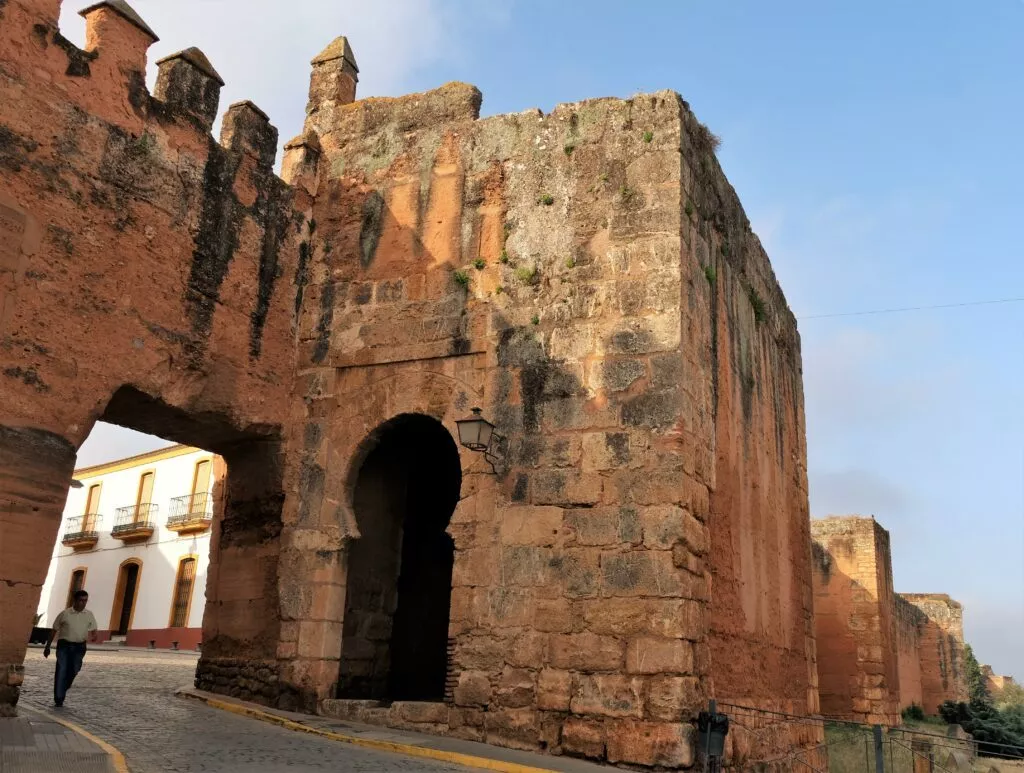
This one is extremely beautiful and is juxtaposed with a “hole” that has been made in the wall right next to it. Modern times have arrived….it was necessary to allow cars to have one way in and one way out of the city !
The Roman bridge a historic site to see in Niebla
Niebla’s Roman bridge dates back to the time of Trajan (98-117 AD).
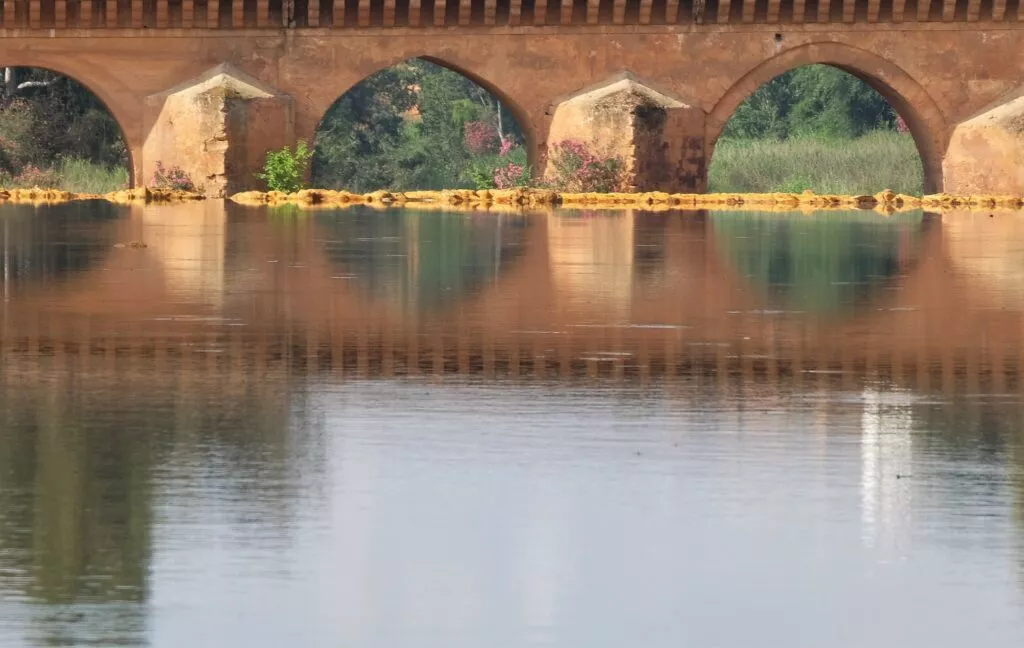
It is just a few minutes’ walk from the old town and crosses the famous and incredible Rio Tinto.
The Romans built a road (calzada romana) from the Guadiana to Italica (Seville’s first Roman site, which is also a great place to visit), which passed through Niebla and this bridge.
The Romans dedicated this bridge to the goddess Minerva 2,000 years ago.
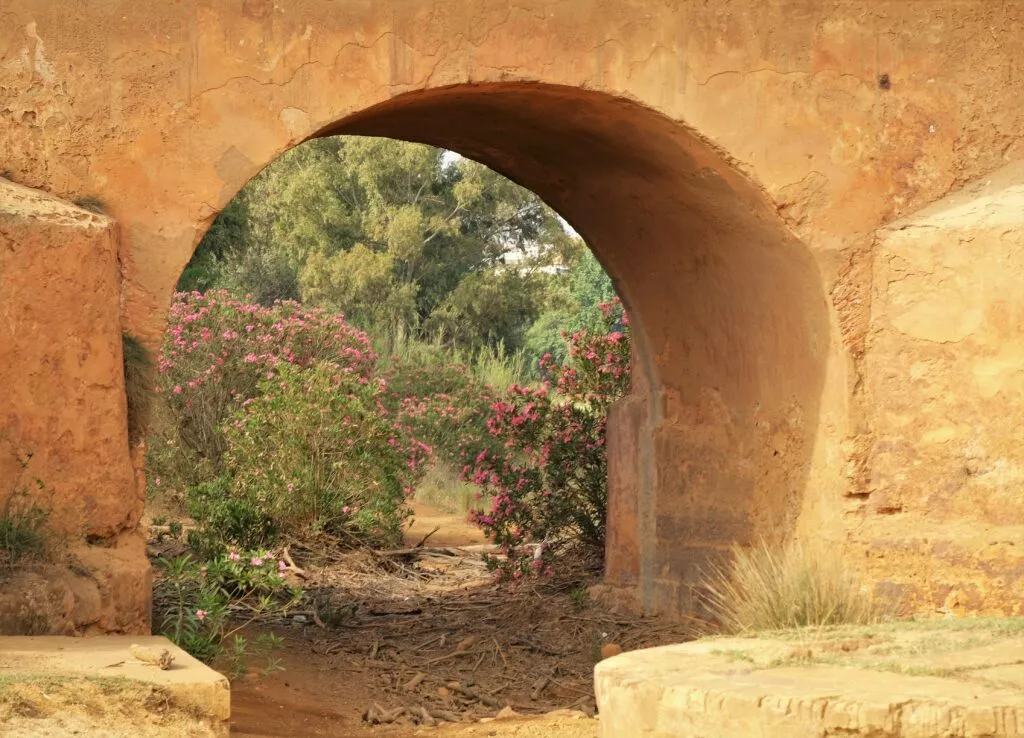
Note: this bridge was bombed during the civil war in 1936. It was subsequently restored. The bridge’s Roman features can be easily seen if you go down under the bridge, to the level of the pillars.
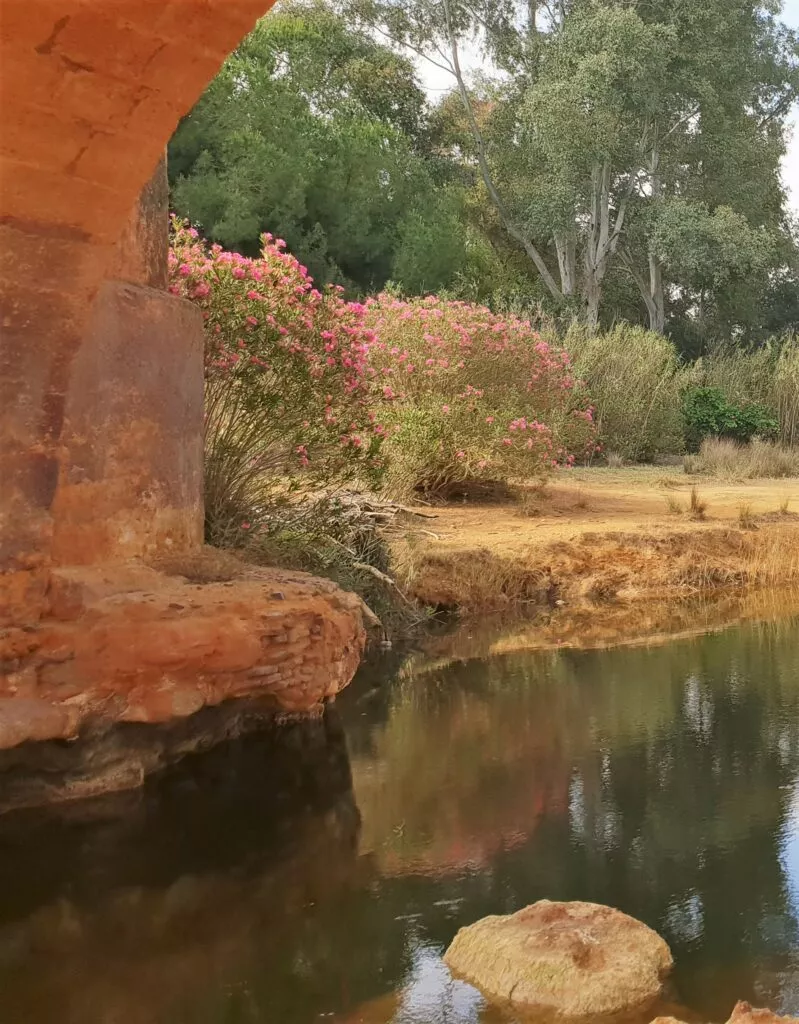
On the theme of Niebla’s thousand-year-old desire for independence. This town also enjoyed a degree of independence in Roman times, when it was granted the right to mint its own coins.
The church of Santa María Granada a treasure to see in Niebla
This is a church that exudes soul and an incredible atmosphere when you’re standing next to it. It is always open for worship. I hope to have the opportunity to go back and attend a mass in this temple so rich in history.
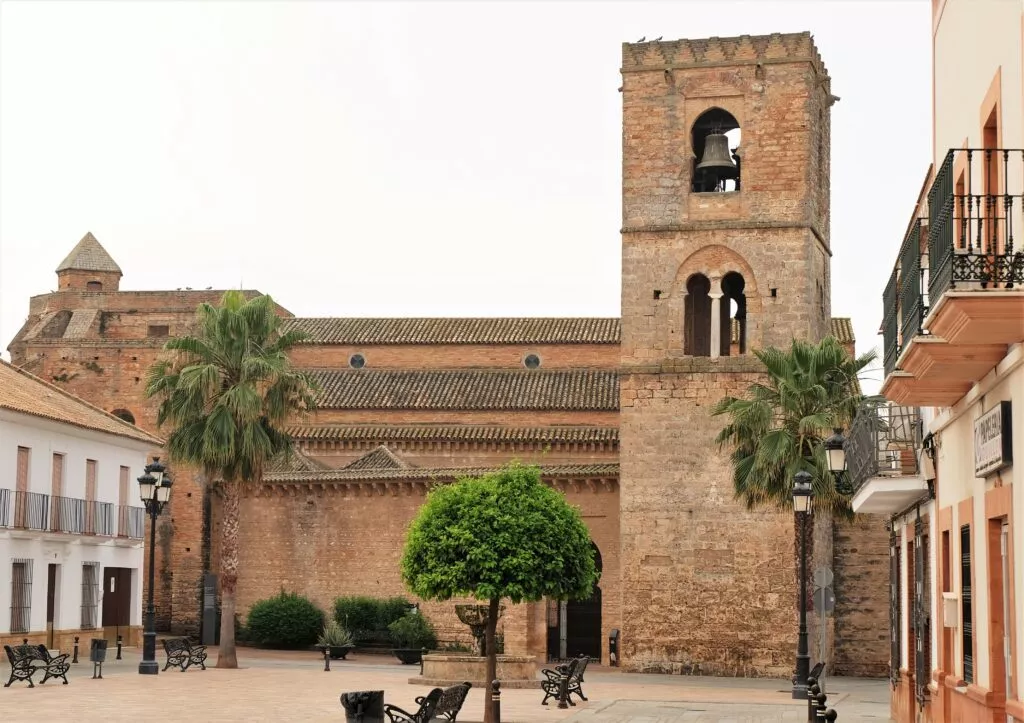
It’s very beautiful, with an incredible harmony between the elements of the civilisations that have passed through this temple. It is classified as an asset of cultural interest. It was also declared a historic and artistic monument in 1931.
This church offers a very rare heritage to see, as it has preserved elements from Roman times. It was a Roman temple, a Visigoth basilica, a mosque and then a church.
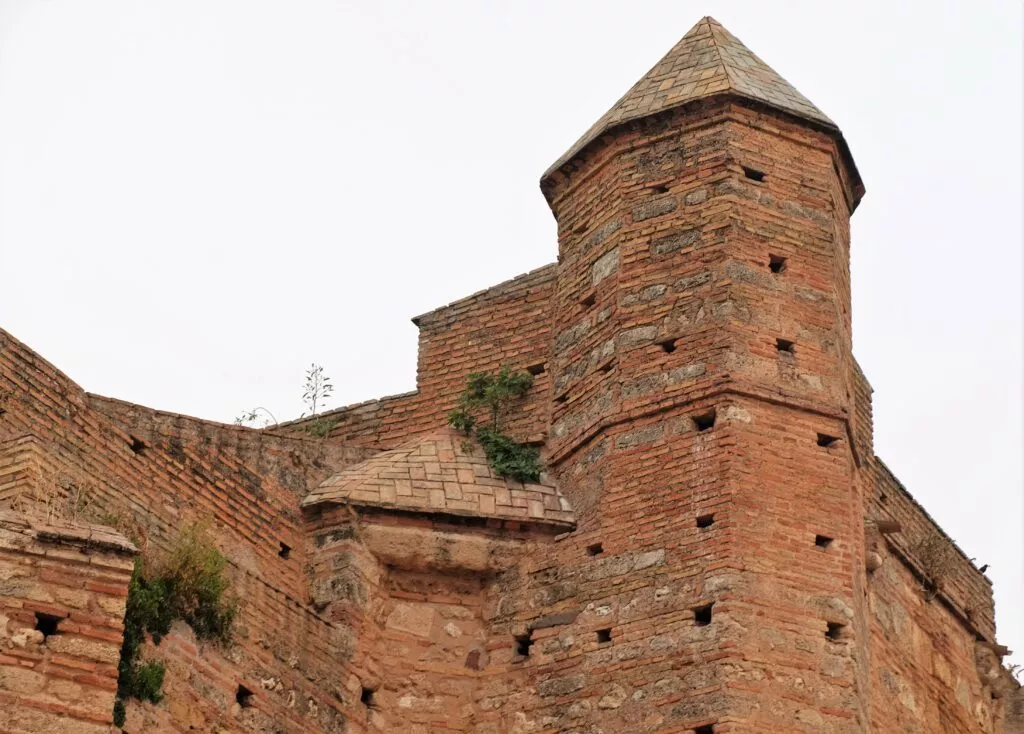
Here are the elements of this heritage
- Roman columns
- inside the church, an ornamental table and an episcopal seat (where the bishop sat) made of stone from the Visigoth era.
The Al-Andalus era left many elements of the former mosque dating from the 9th century :
Outside:
- Next to the entrance, a sahn, an asaquifa (a kind of patio with arcades), remains from the period. This was the prayer area reserved for Muslim women. It was right next to the place where ablutions were done before prayer.
- The bell tower of the church, which is none other than the former minaret of the mosque.
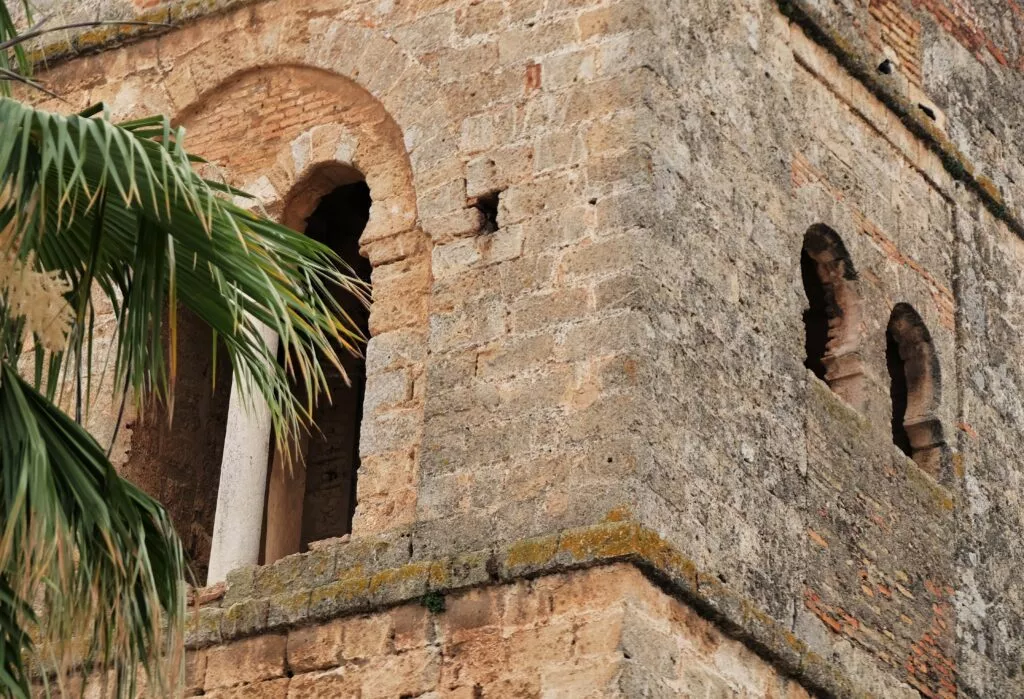
- It was from here that the muezzin called the faithful to prayer. Since then, among Christians, this call to prayer is signalled when the bells ring.
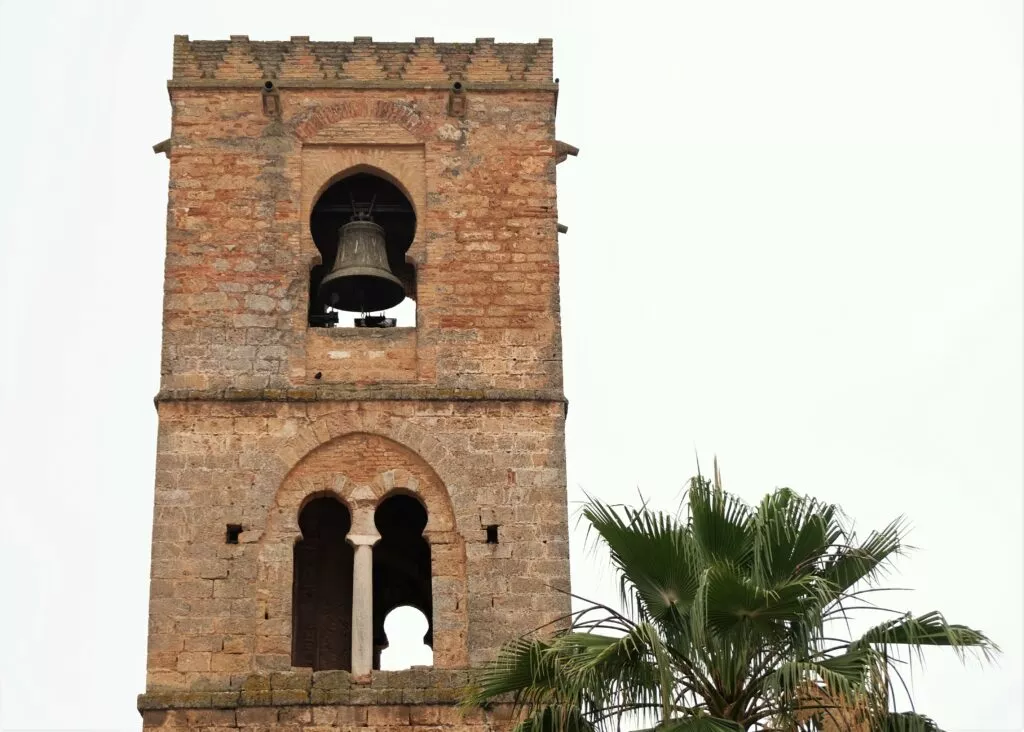
Inside:
- Remains of the minbar (raised place from which the imam delivers sermons)
- Remains of the walls, including the qibla with the mihrab.
The most distinctive feature of the Christian church, which is Gothic-Mudejar in style, is the Mudejar coffered ceiling.
Niebla Castle
Niebla Castle in its current form dates from after the Reconquest.
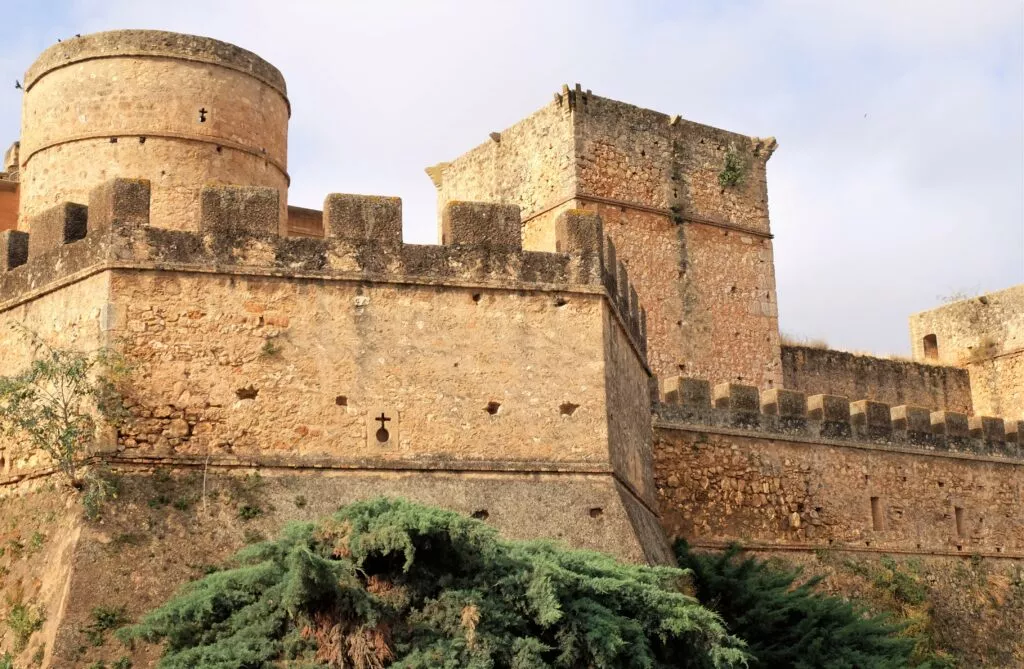
It also bears the name of its former owners, the Guzmanes castle.
You can visit the castle every day, in the morning or late afternoon. The tour takes in several parts of the castle, including the old dungeons and a torture museum. A number of torture instruments and machines are authentic pieces dating back to the Inquisition…
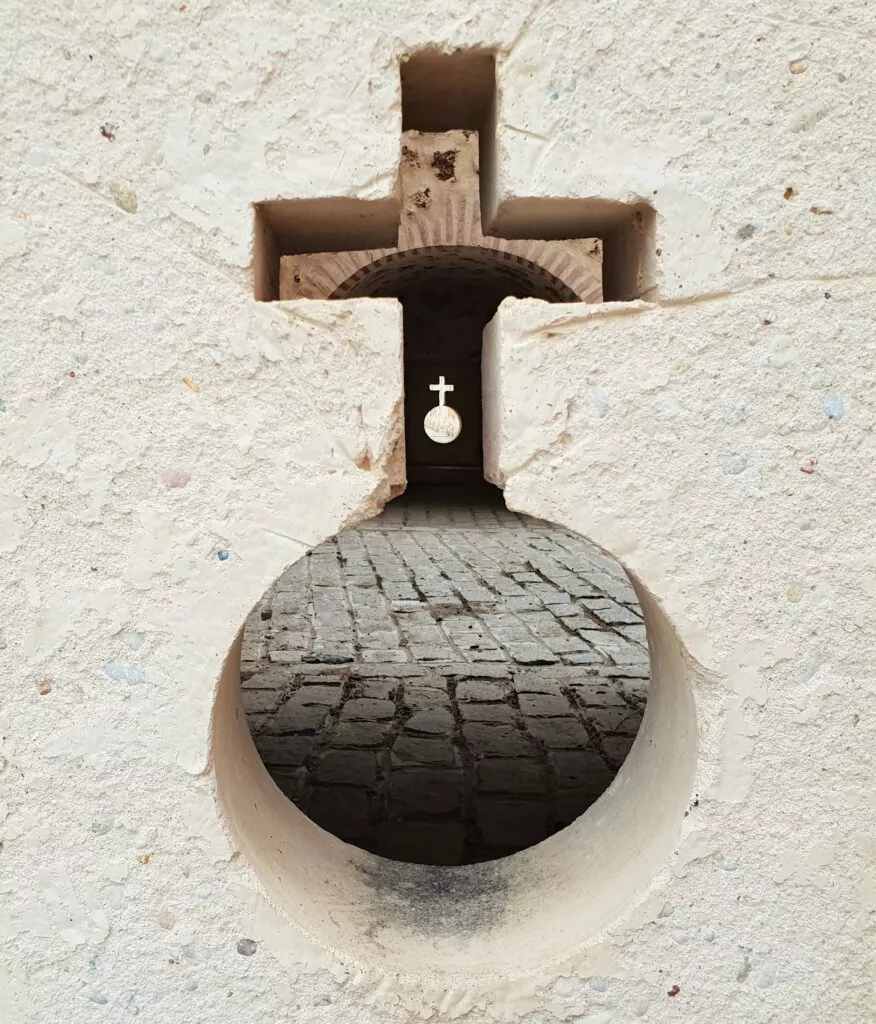
This monument is just as old as the wall and the churches, but its appearance is more recent. It must have been rebuilt twice.
The Lisbon earthquake of 1755 partially destroyed it. Then, during the War of Independence at the beginning of the 19th century, Napoleonic French troops ransacked part of the castle.
The church of San Martín
The church of San Martín also has a very special history. As is often the case, it was also a mosque. However, its history took a curious turn during the reconquest by the Catholic kings. Alfonso X donated the mosque to the Jews, who transformed it into a synagogue…., which in turn became a church.
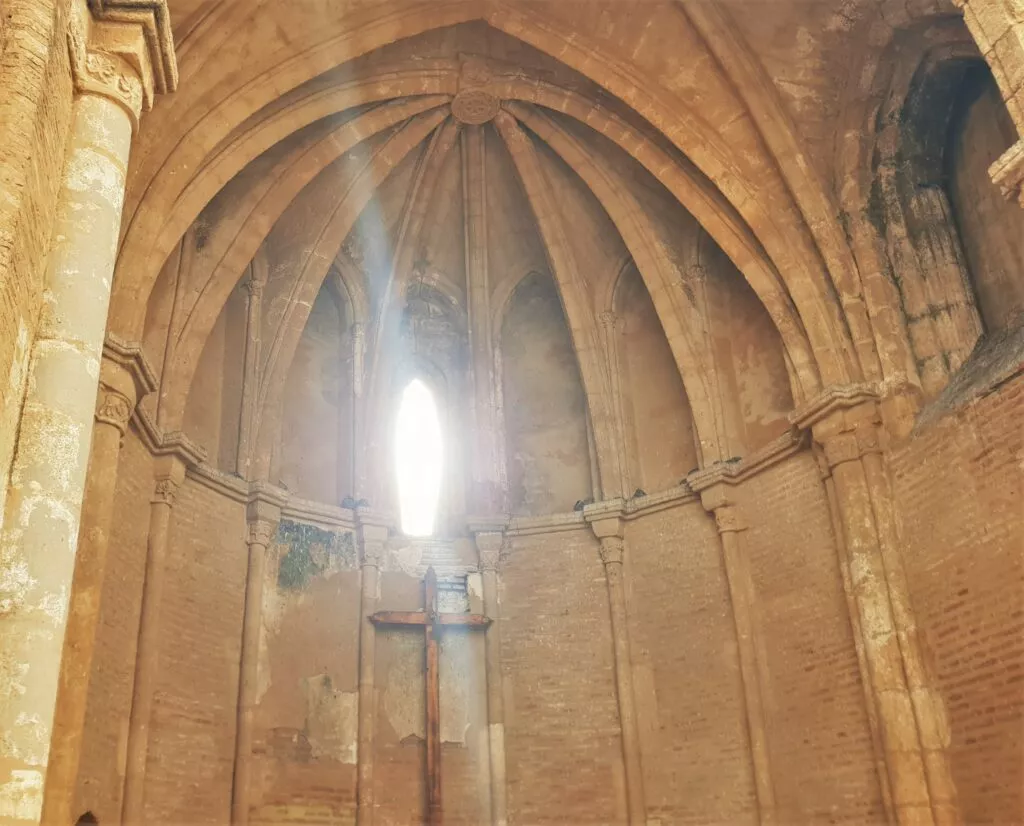
The other curious thing is that this church is now “cut” in two. Only two parts remain: the main door of the former mosque…
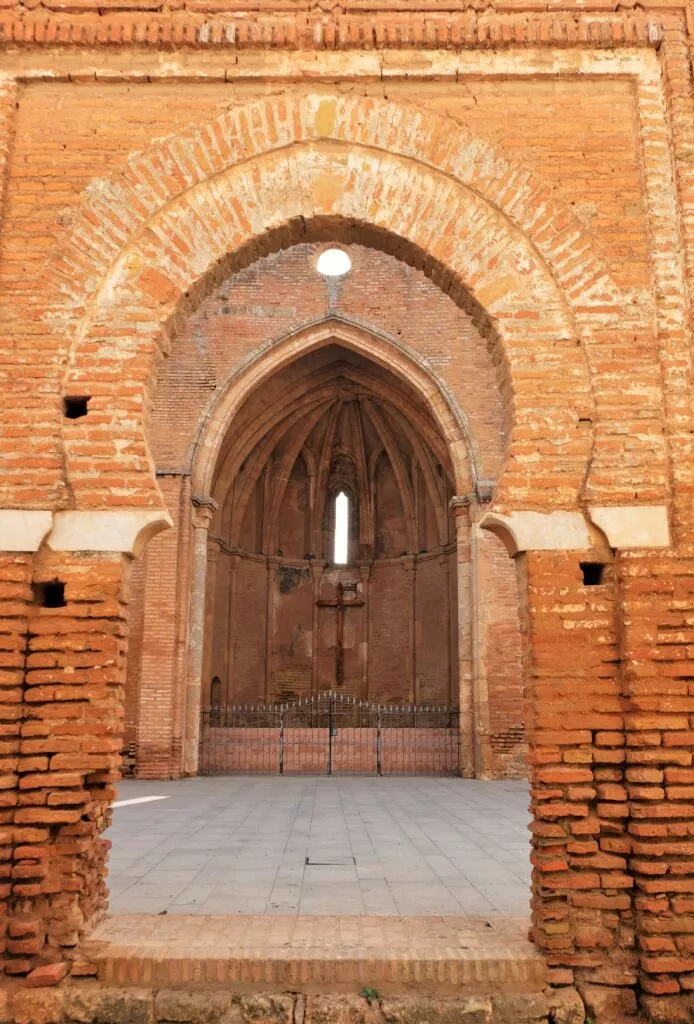
and the apse with the bell tower next to it and a chapel.
A final word on Niebla: this town has been “adopted” by many storks.
Almost every electricity pole around the town has a stork’s nest.
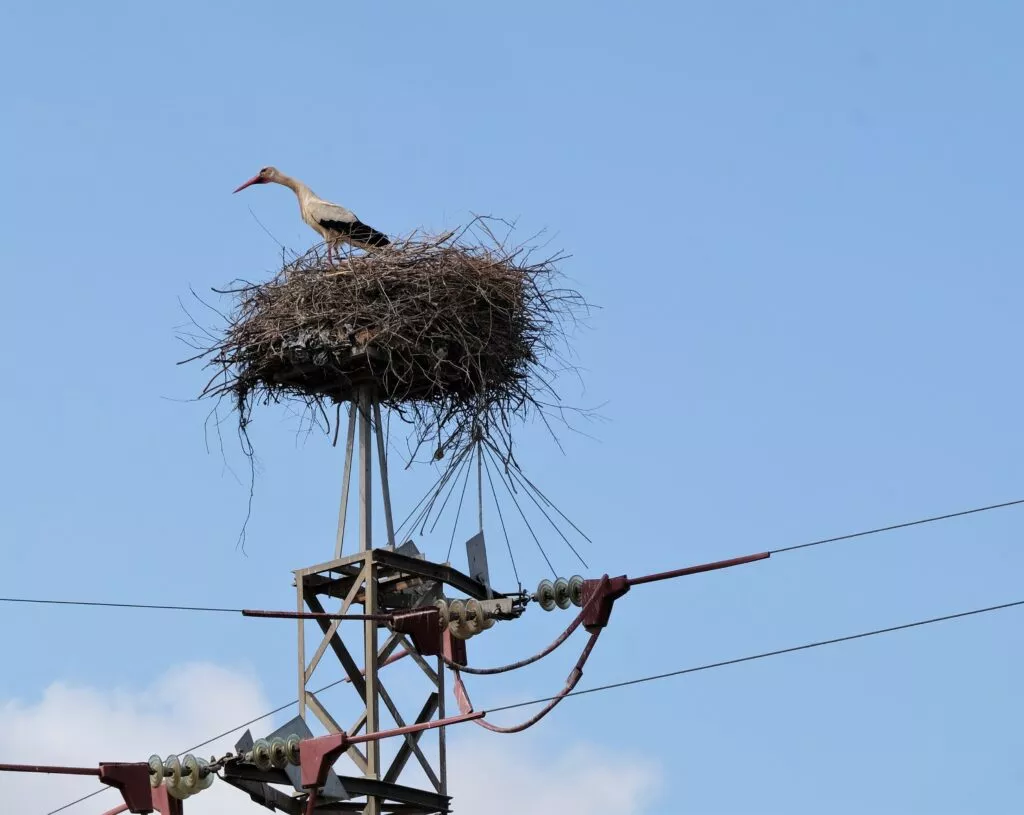
Around the town, in spring, you can see many fields full of wheat or sunflowers.
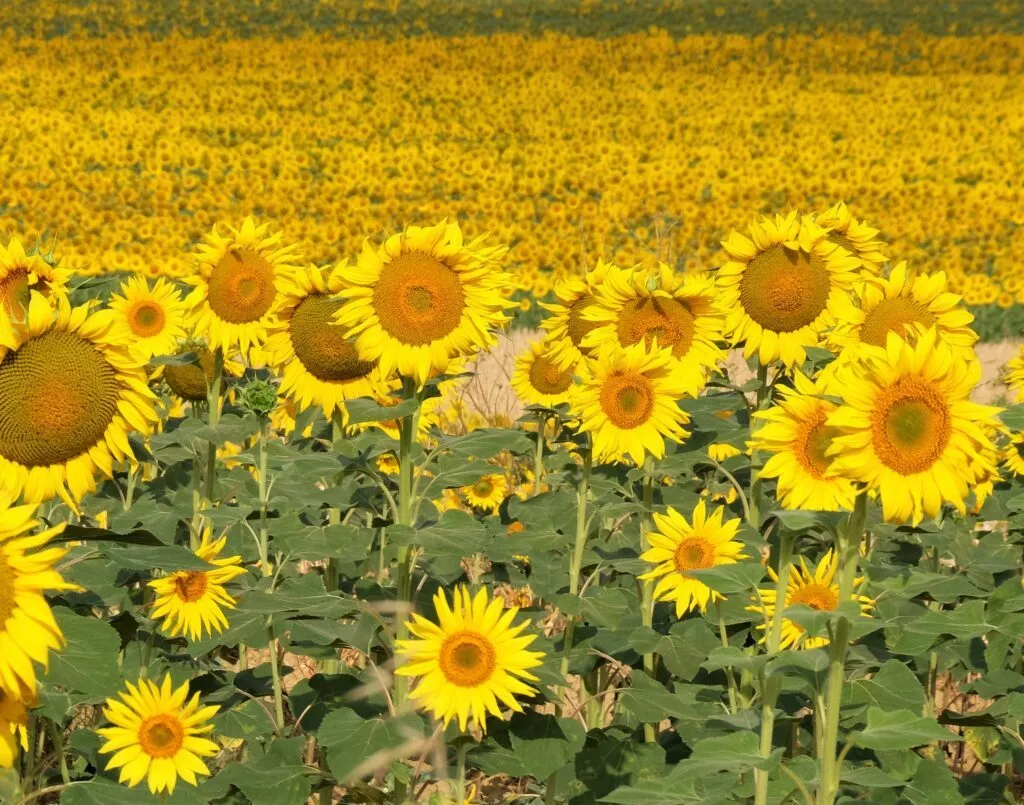
What can you do from Niebla and Huelva?
Below are a number of ideas for activities and visits, classified by theme. You can book them online today.
Bonus: all activities can be cancelled up to 24 hours before the scheduled date.
Period of the Niebla Fair
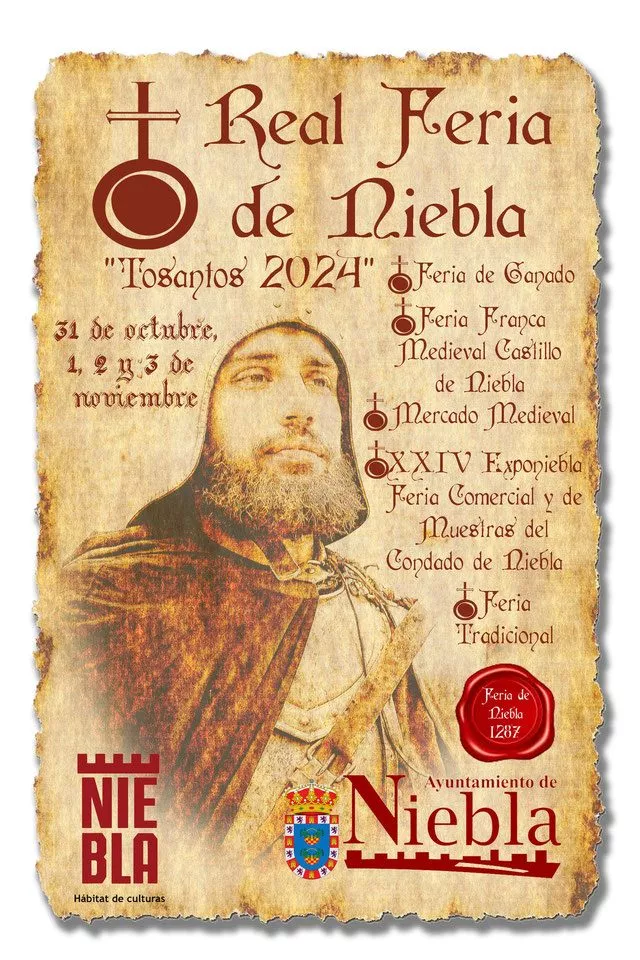
Book accommodation in an unusual village
Here’s a great idea for staying one or more nights in the Niebla area: the village of El Rocio (see photo and history below), which is located in the famous Doñana Protected Park:
What to see near Niebla?
The province of Huelva, as well as the neighbouring provinces of Cadiz and Seville, offer a wealth of sites to discover and visit. Here are just a few ideas:
Trek along the banks of the Rio Tinto
The Rio Tinto is a river unique in the world and well worth seeing, as are the landscapes that surround it.
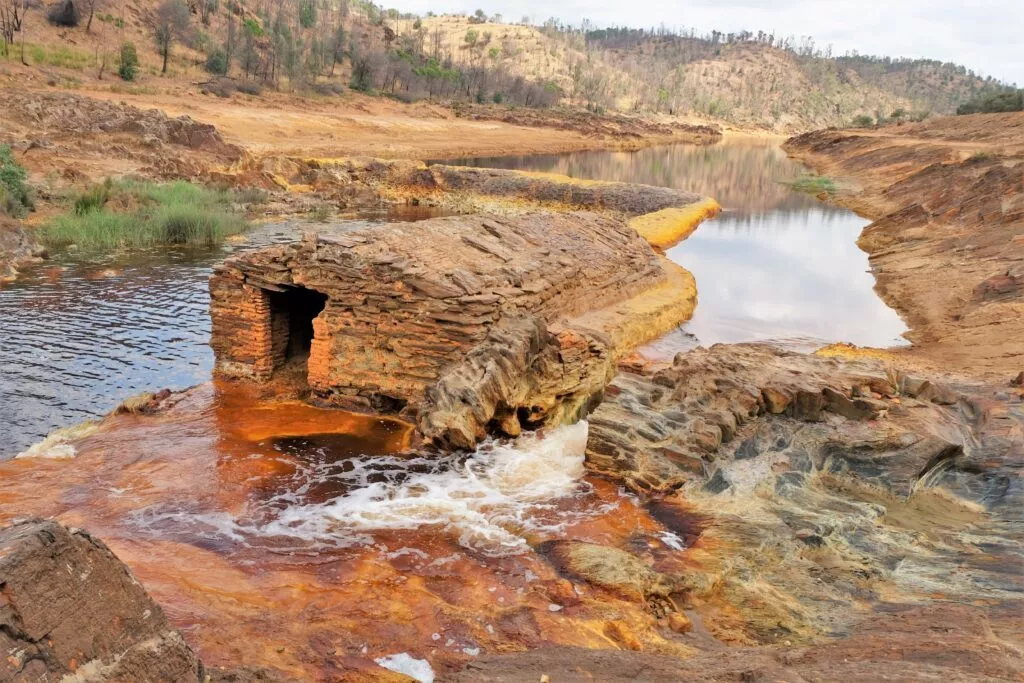
Here’s a link to a walk along the banks of the Rio Tinto. You will discover old flour mills on the river.
El Rocio
This is the famous village of El Rocio in the province of Huelva. It’s a magical place where Spain’s biggest romeria (pilgrimage) takes place every year. This village has no roads, only sand. It is easier to get around by stagecoach or horse than by car.
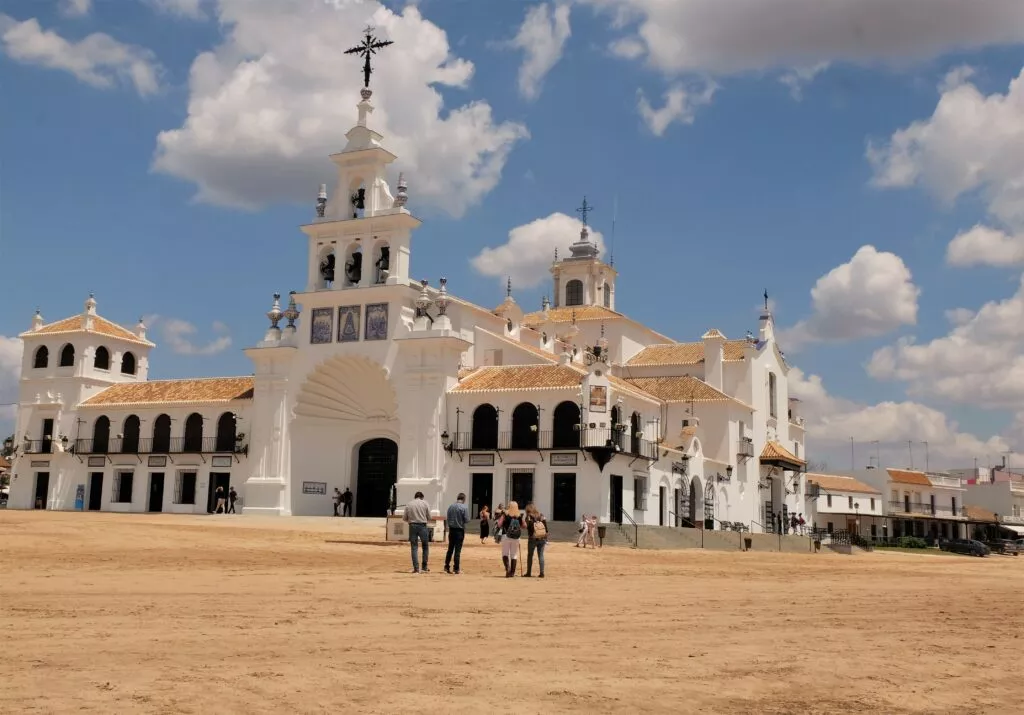
It’s easy to see how the Spanish colonists influenced the Americas (in terms of ranches, stagecoaches and cowboy outfits). That’s where it all started!
It’s strange the impact of movies, because today we know the Tabernas Desert for its western film sets. But all this American western scenery originally came from the Spanish settlers in this region, who went to live in the Americas after Christopher Columbus discovered this sea route. Didn’t he set off himself, with the Santa María, the Pinta and the Niña, from a small port just a few kilometres from here?
Discover an unusual Seville
An hour’s drive from Niebla is Seville, the capital of Andalucia. Seville is a city that takes several days to visit whenever possible. In the link below, you’ll find some great ideas for discovering Seville off the beaten track.
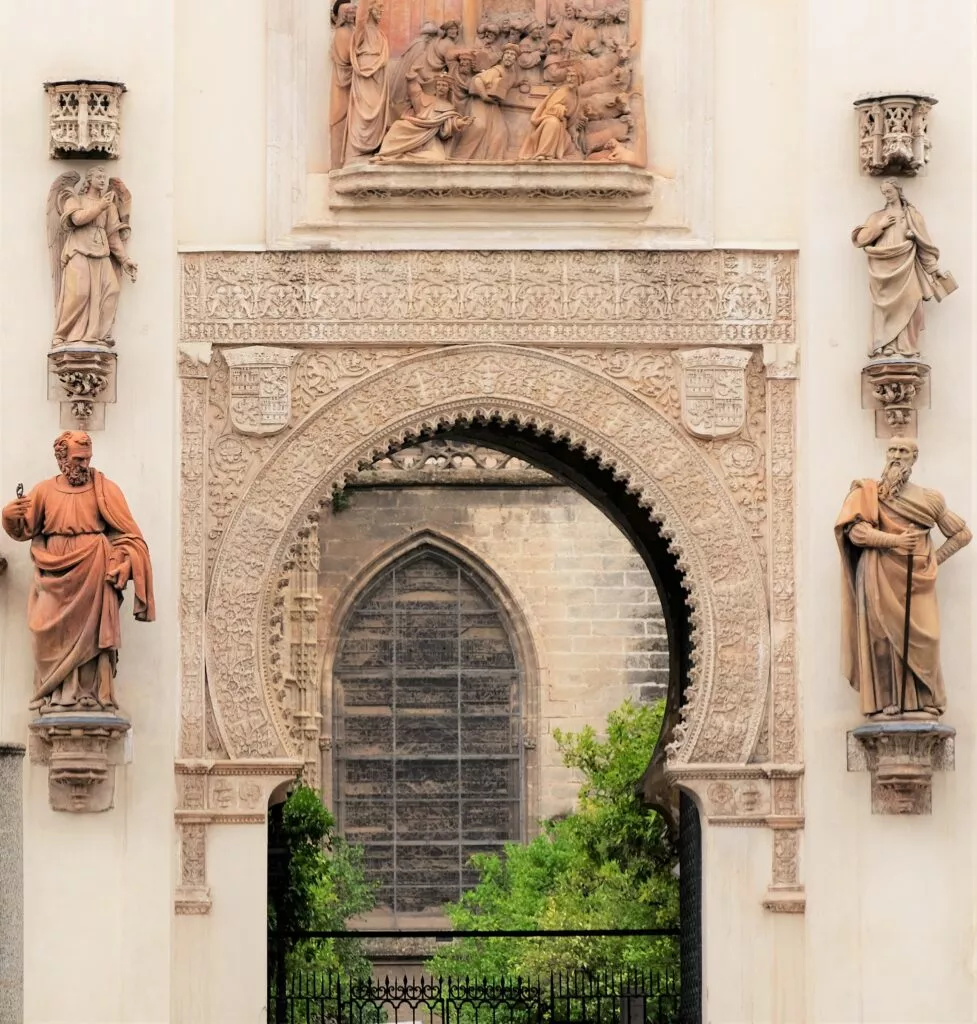
Discover a secret Seville.
Some useful links (car hire, ideas for visits)
Easy and economical bookings
If you are in Andalucia as part of a tour with several major cities to visit, here are some links that may be of interest:
Visit Cadiz, a city with an incredible past, and one of great beauty, on the Costa del la Luz :
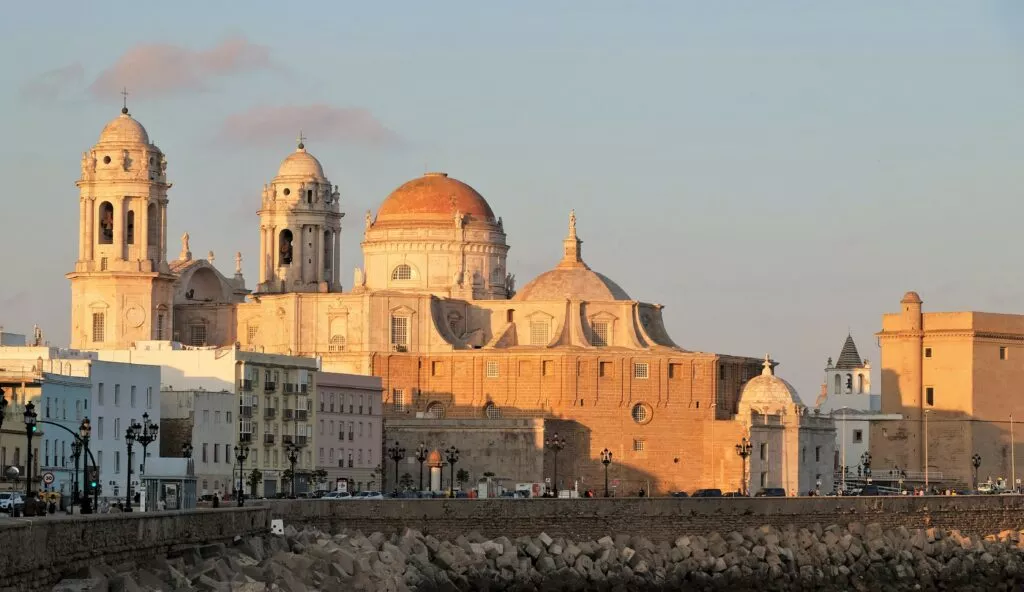
If you’re visiting the Costa del Sol, you can find out what to see in Malaga in this link:

To visit Granada, check out the Albaicin and Sacromonte districts:
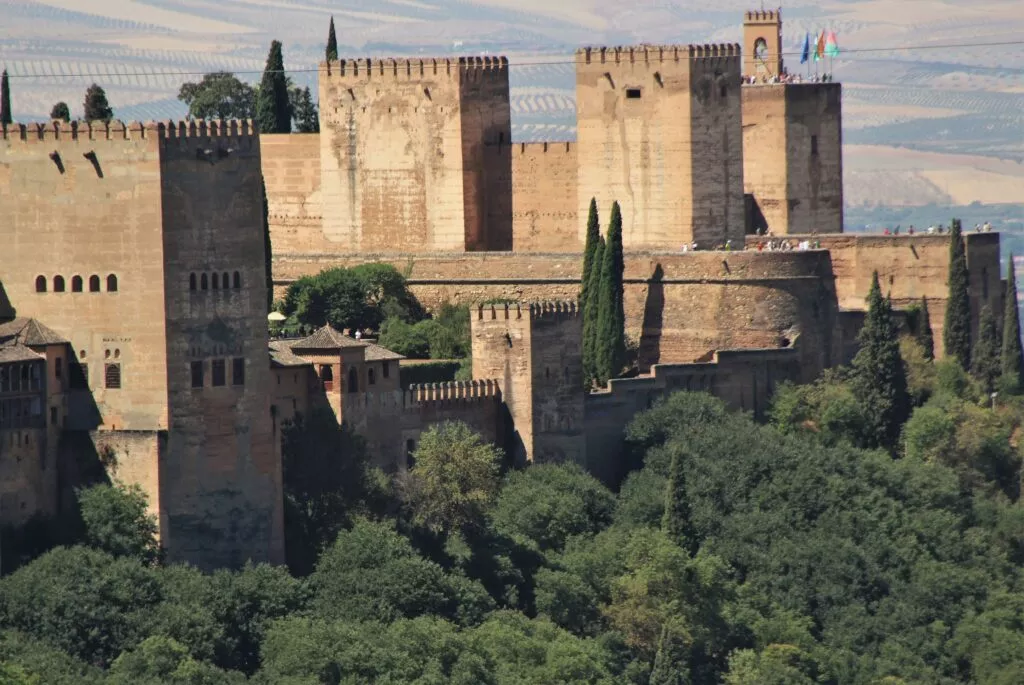
And of course, visit Cordoba, the Caliphate city, and the Juderia quarter
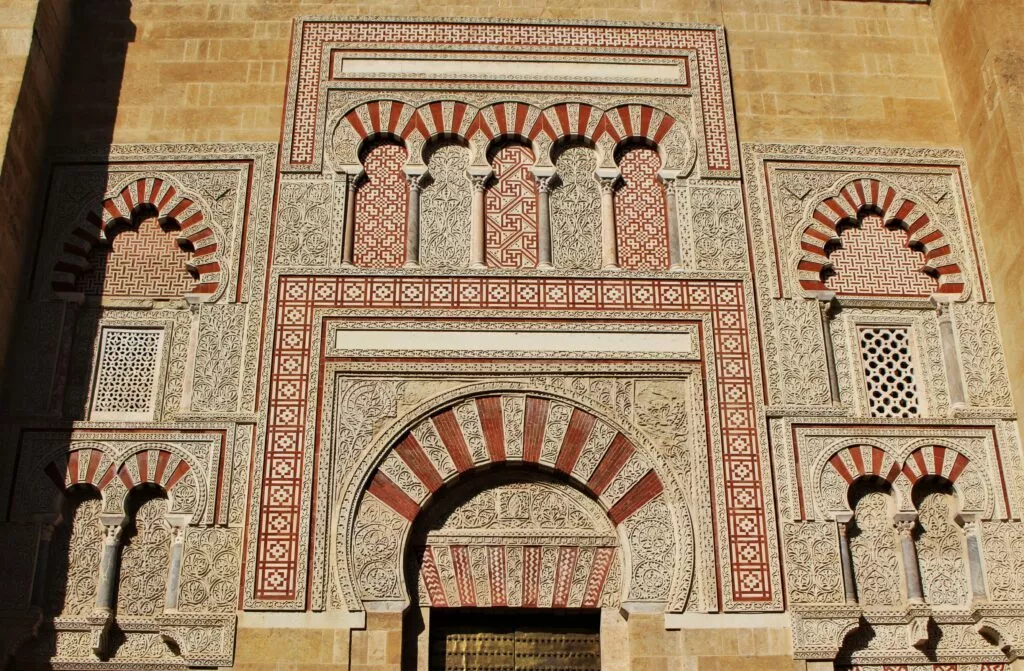
Discover more of Andalusia’s beautiful sites in the Andalusia blog pages.
Here is the link to receive our andaluciamia.com blog newsletter
The latest articles on Andalucia
-
Interactive map of Andalucia with best places to see
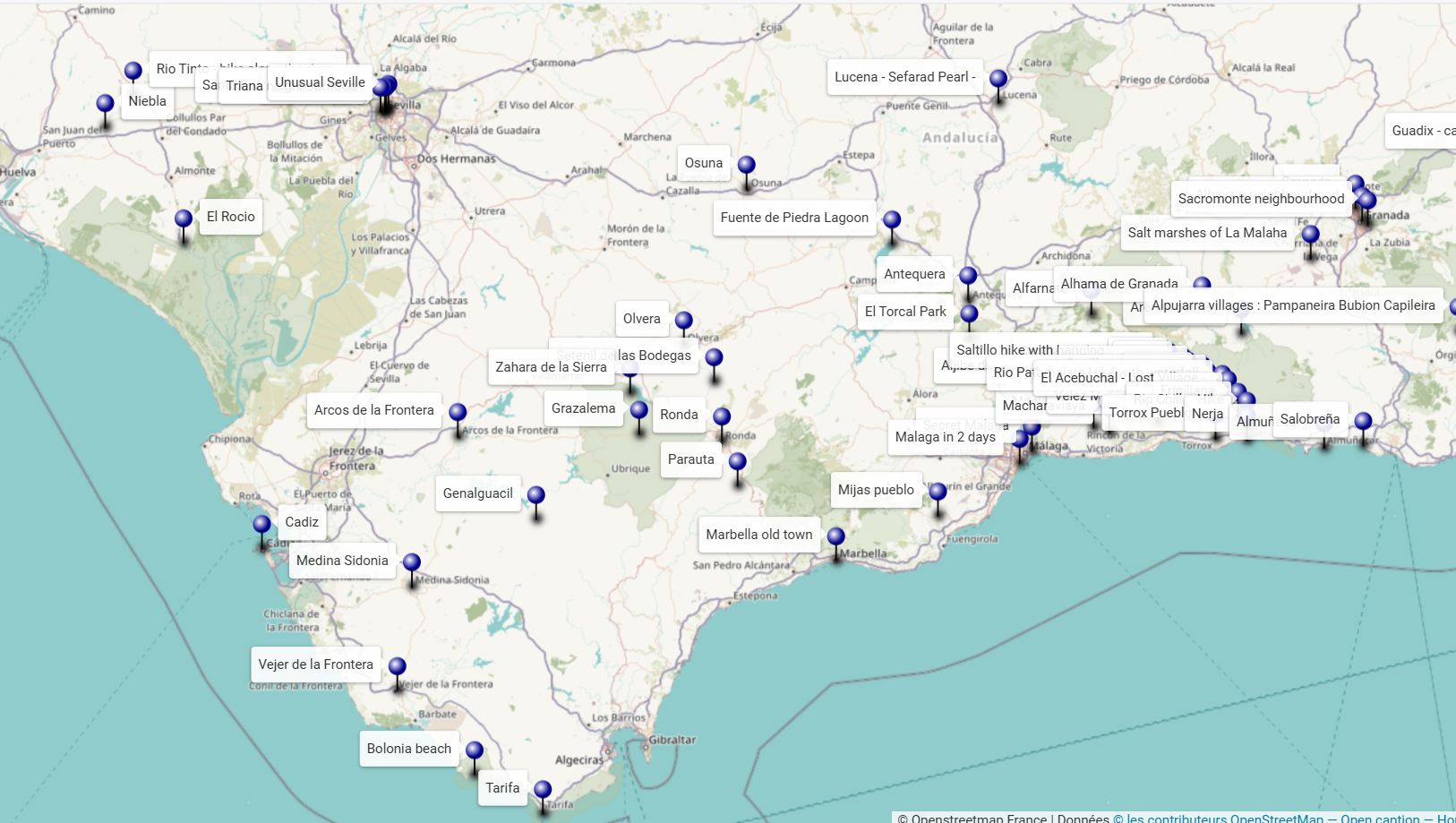
An interactive map of Andalucia to discover the sites to see around your holiday destination or to prepare a tour or road-trip.
-
Discover one of the most beautiful beaches in Cabo de Gata
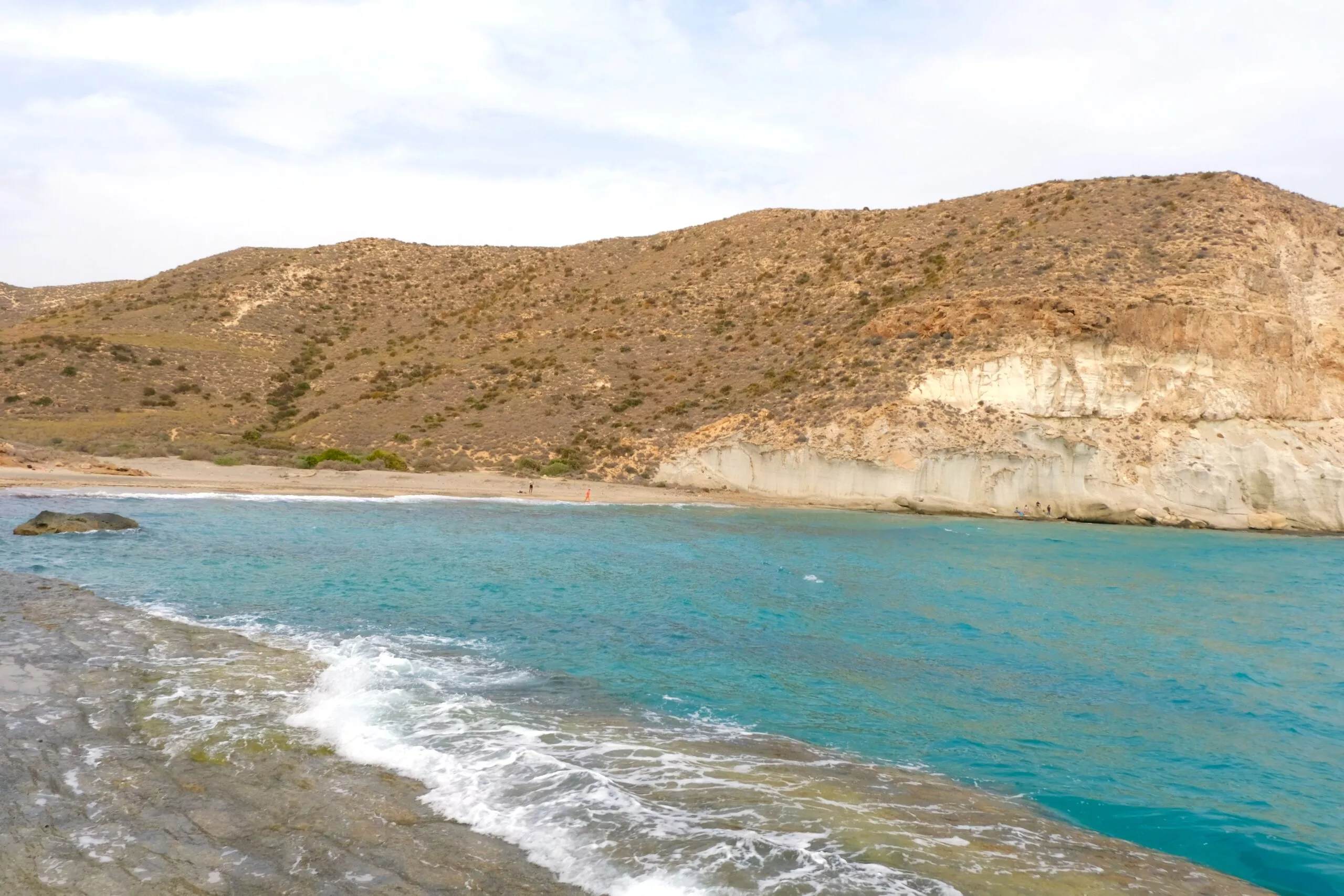
Cala de Enmedio is a paradise beach in Cabo de Gata In this article, you’ll find all the information you need to discover one of the best beaches in Cabo de Gata: Cala de Enmedio. A few words about Cabo de Gata Where is the paradise beach of Cala de Enmedio located How do I…
-
Sanlucar de Barrameda Horse races 2025
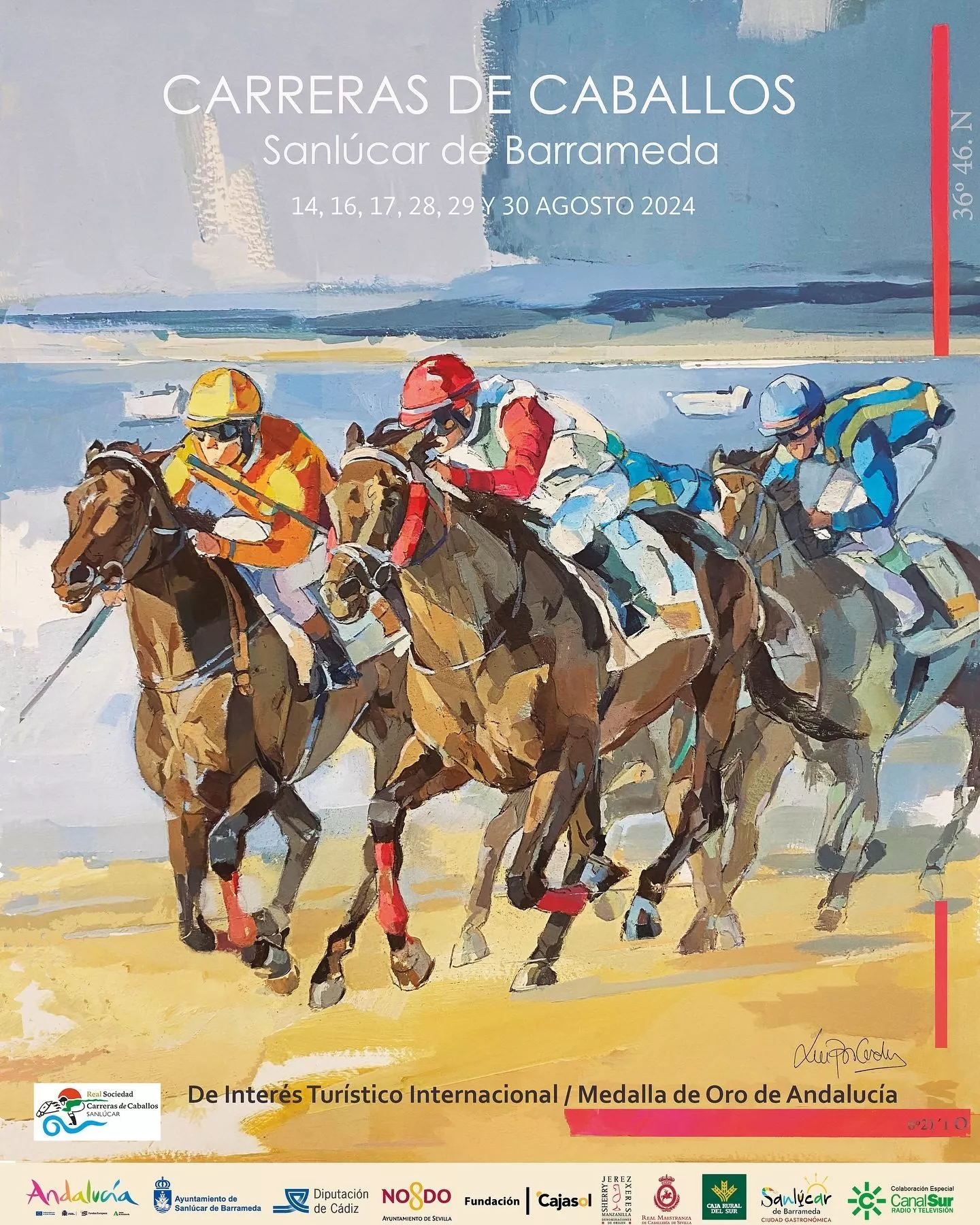
Come and experience the incredible horse races on the beach at Sanlucar de Barrameda in the province of Cadiz.
-
10 best things to see in Jaen
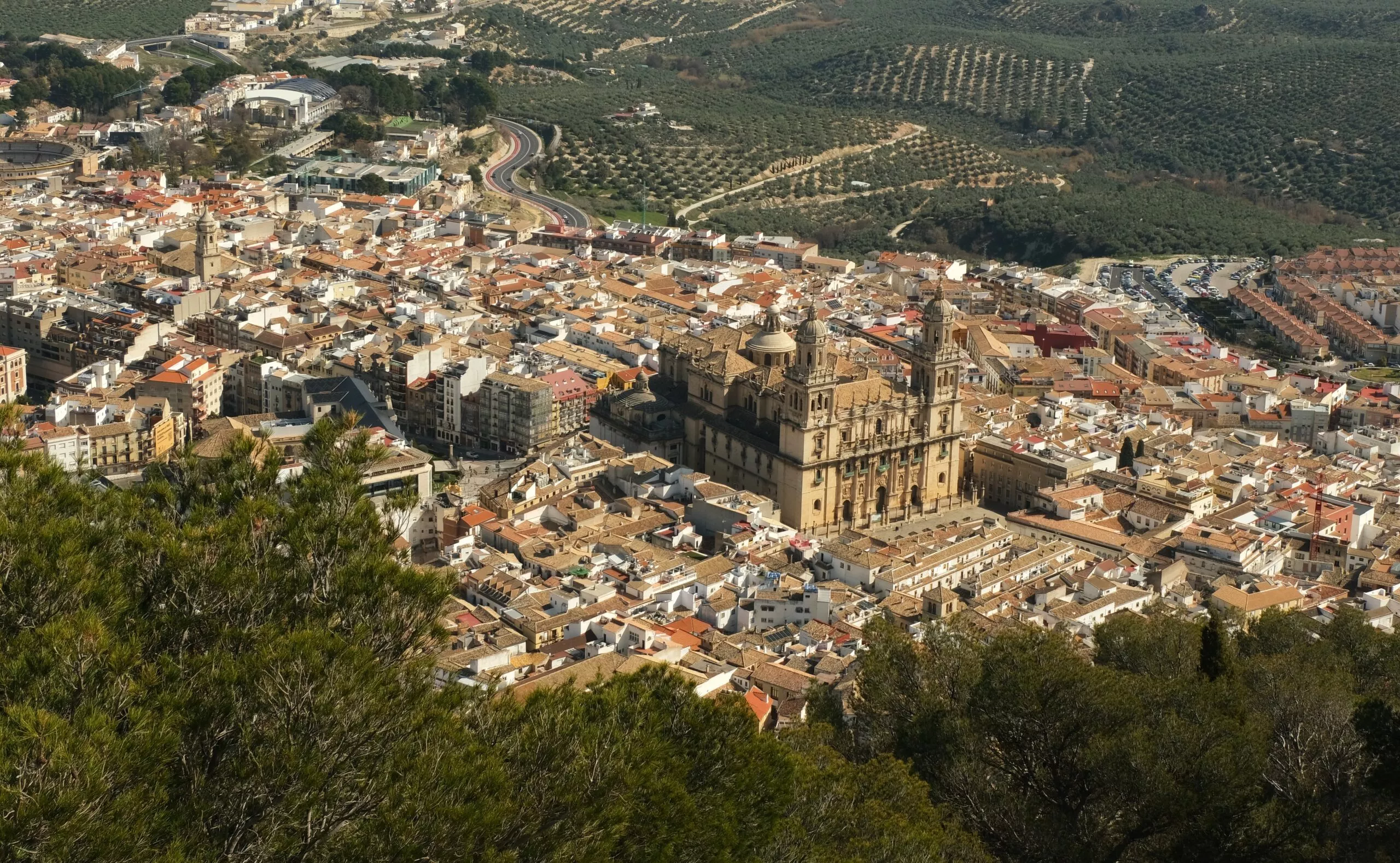
The essential things to see and do in Jaen, Andalucia. Jaen, the world capital of olive oil, has a few treasures to discover.
